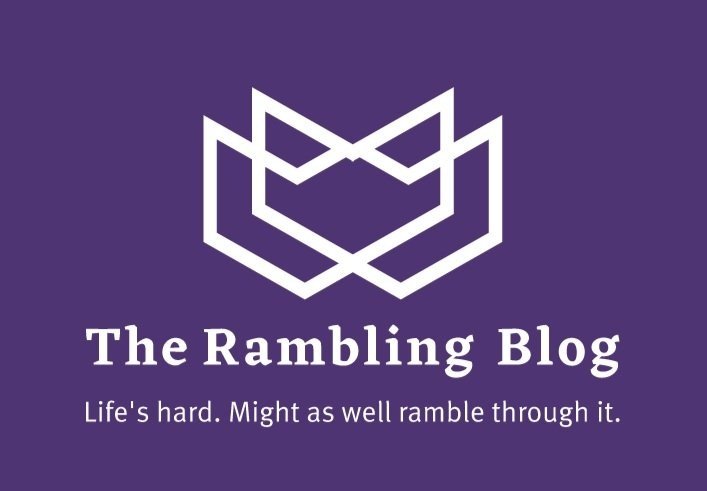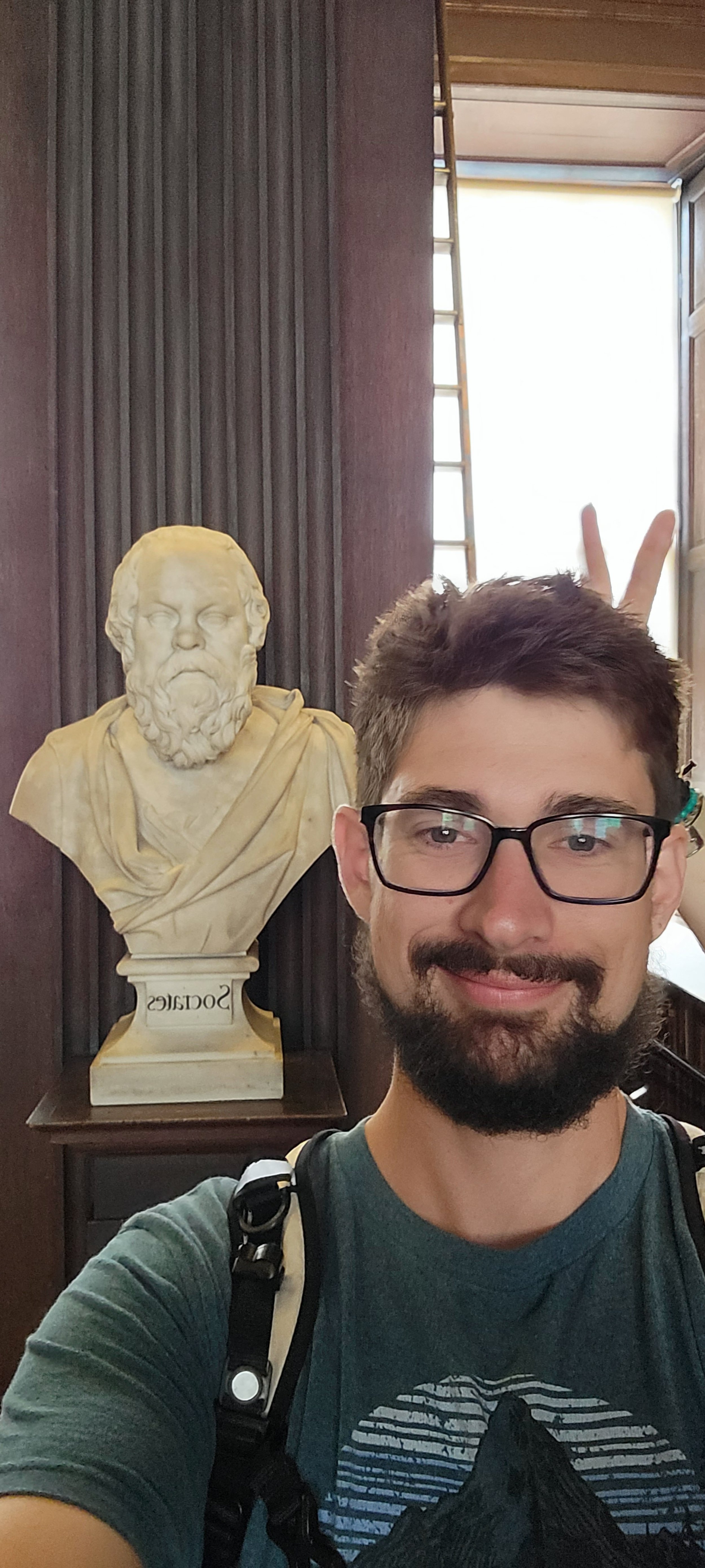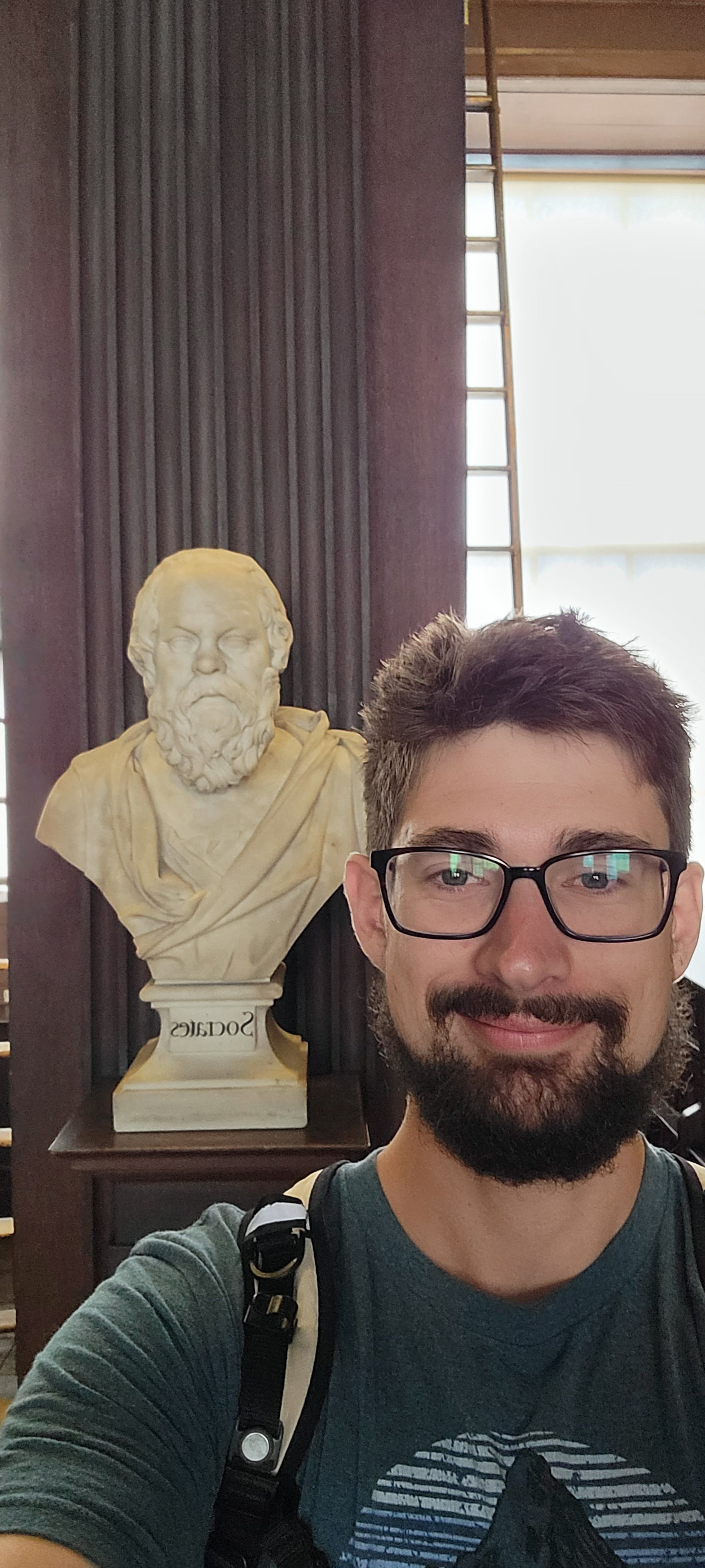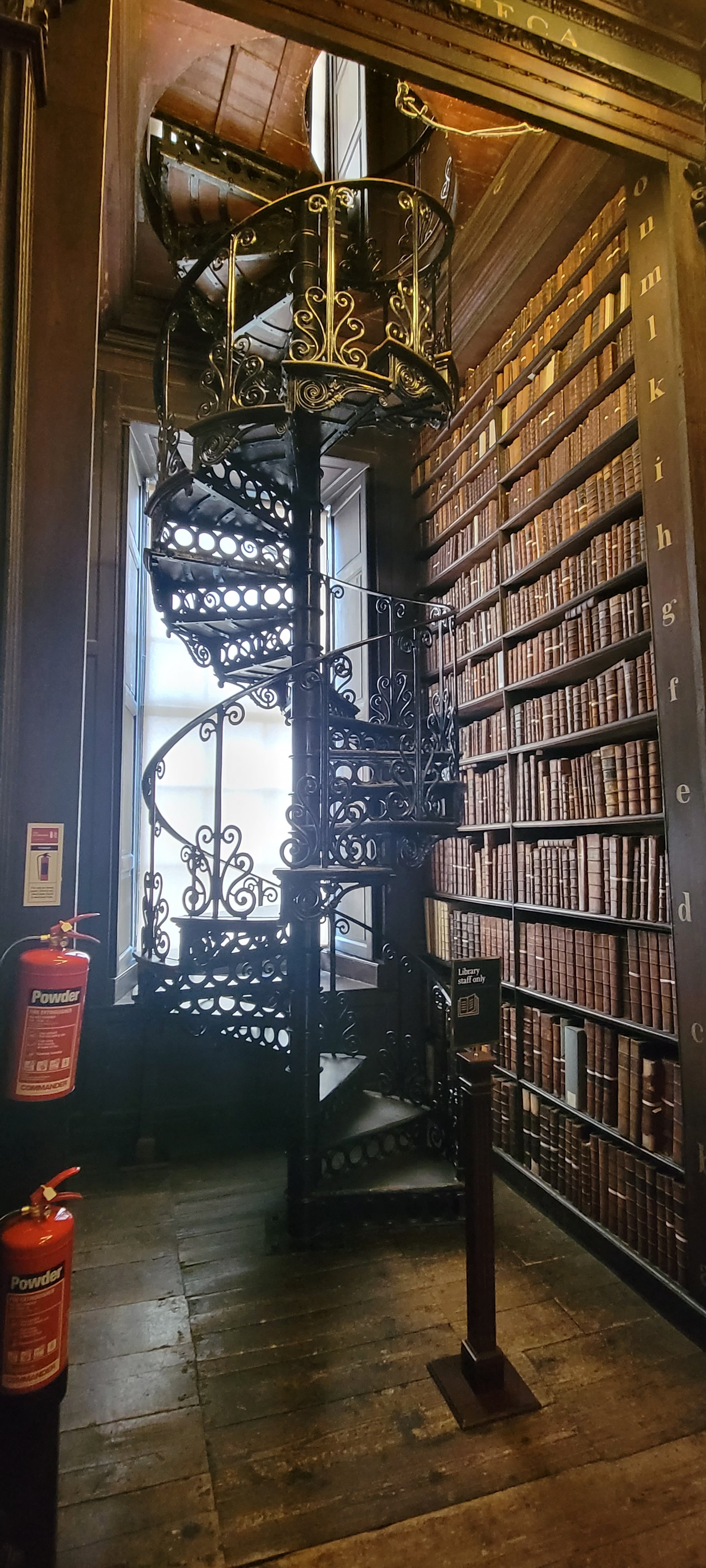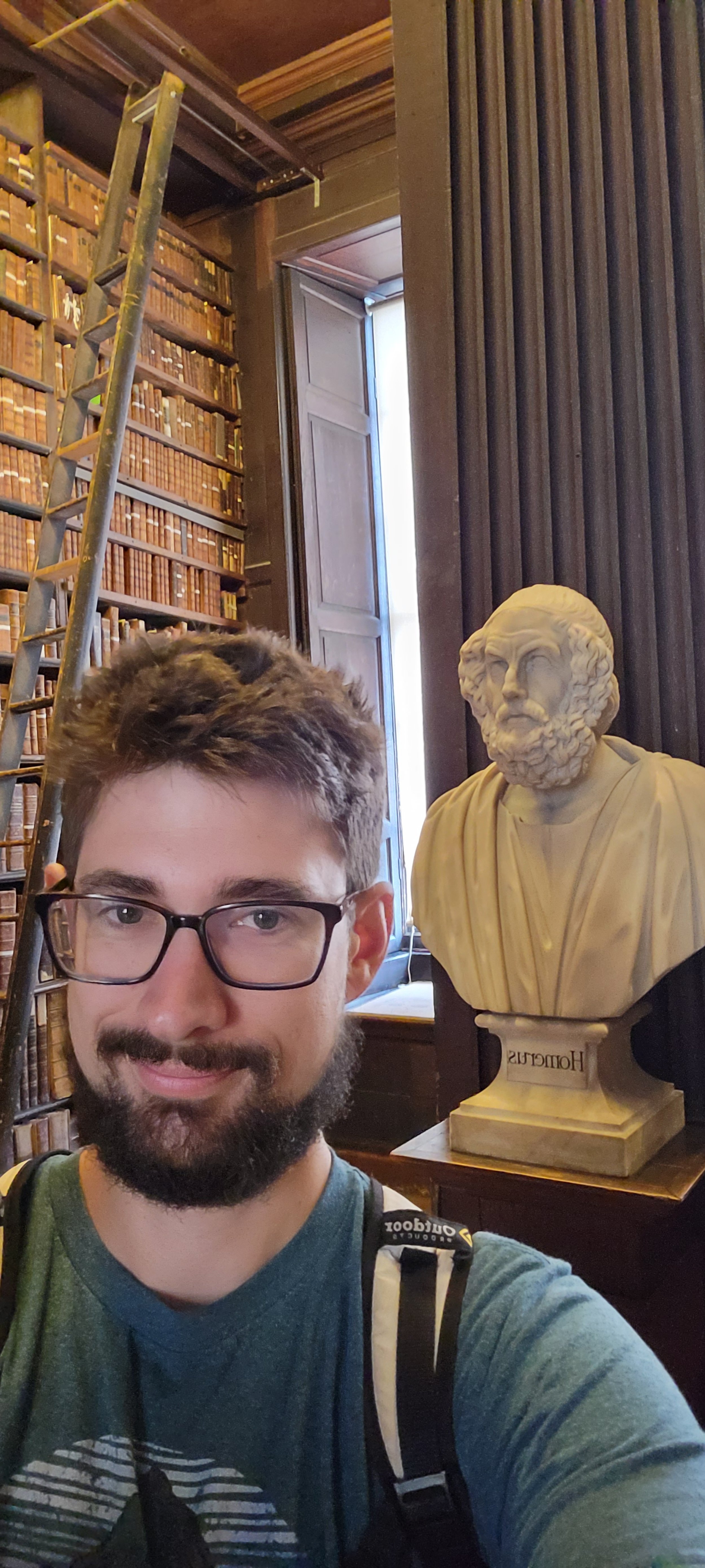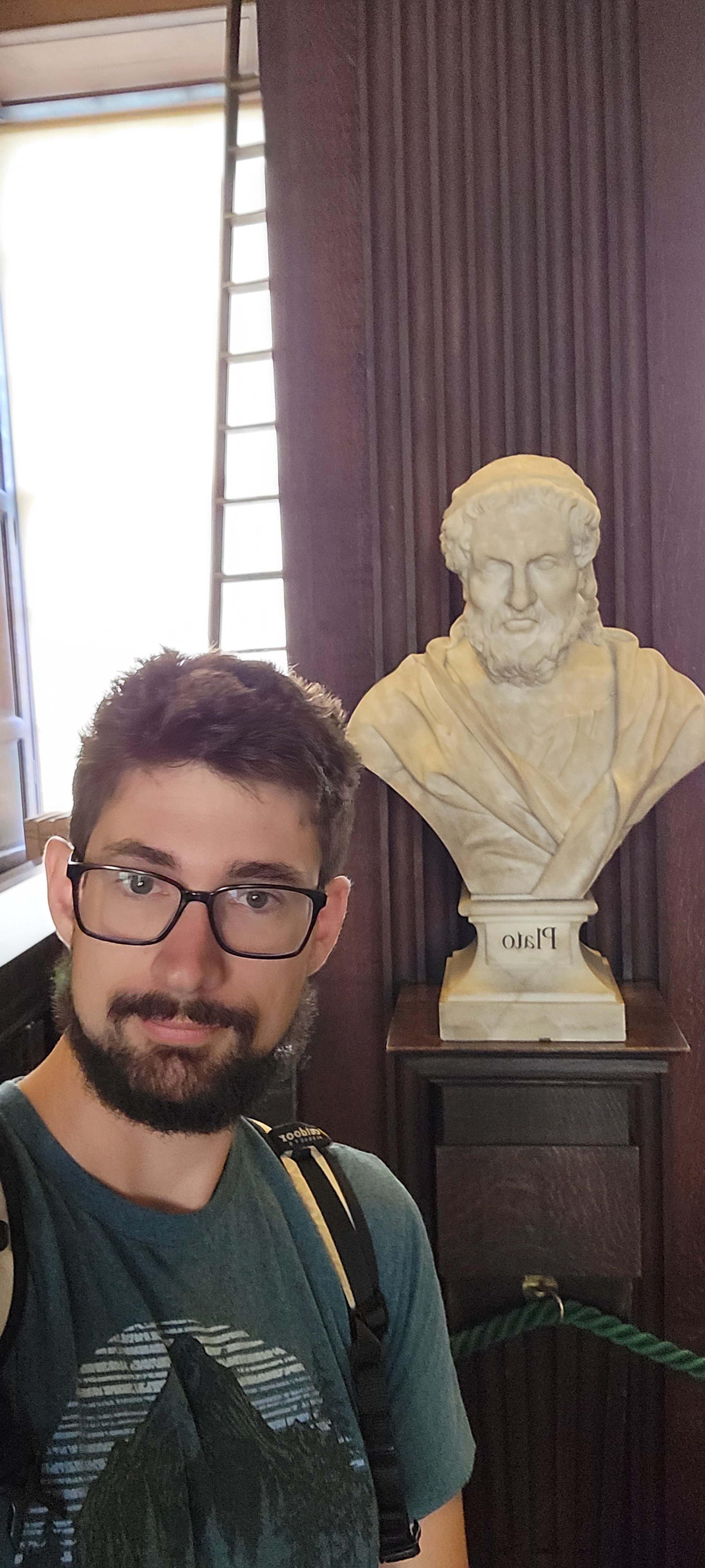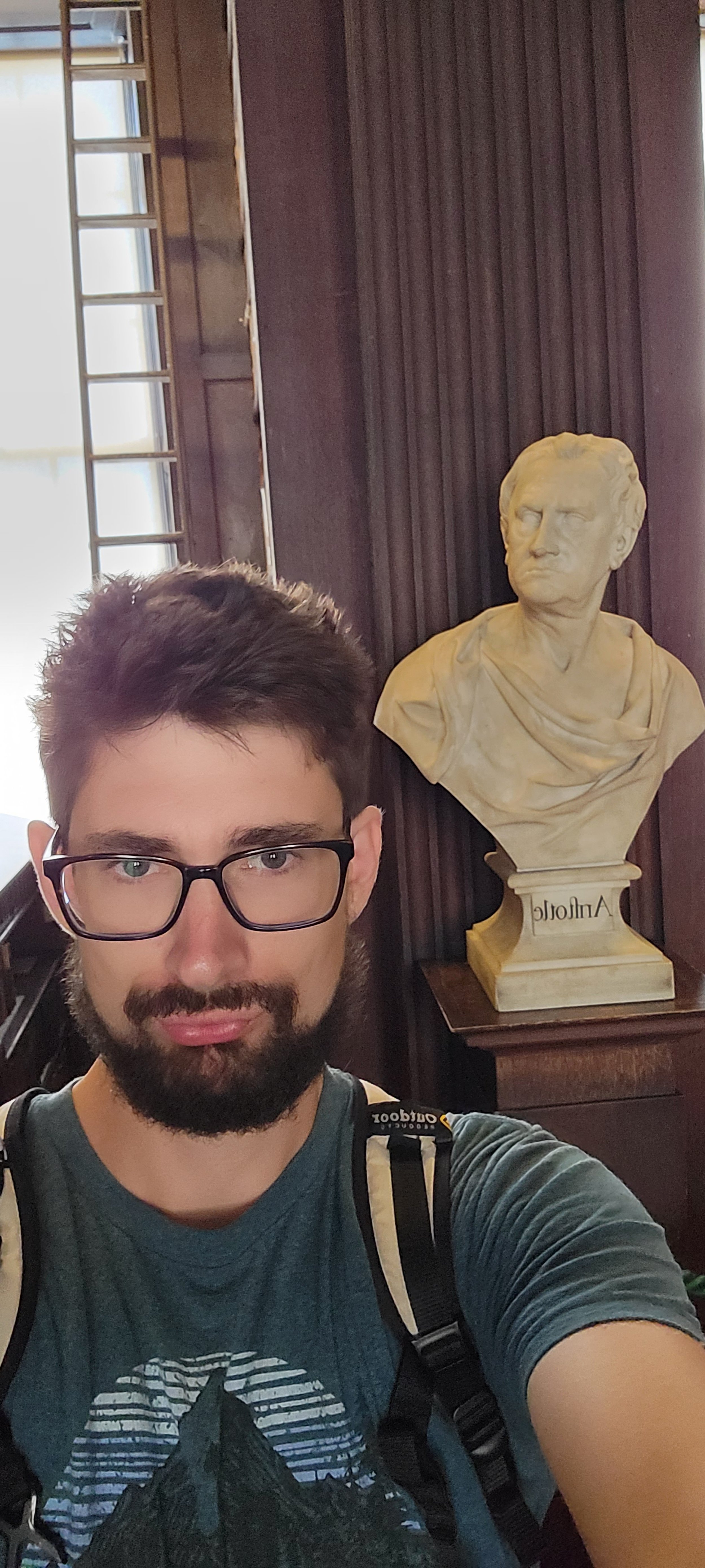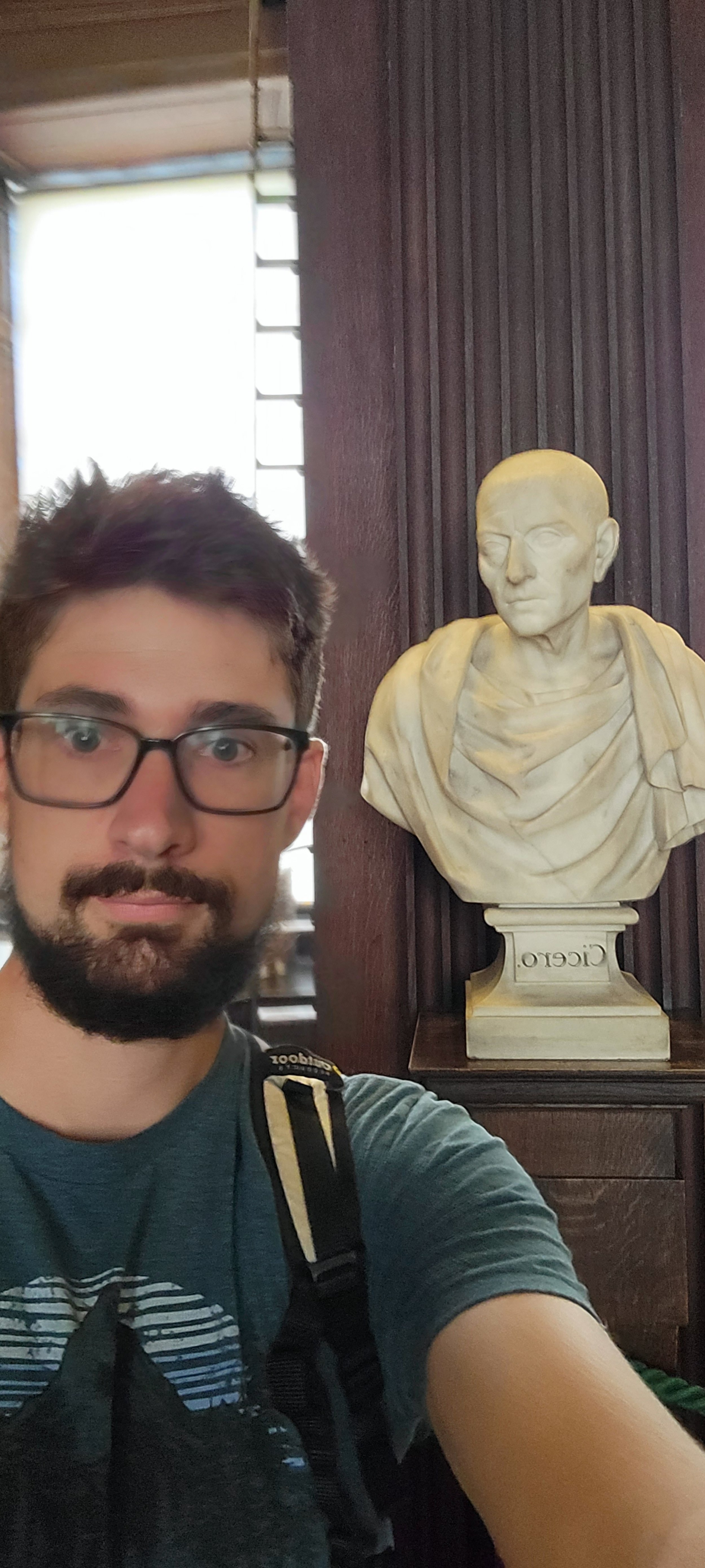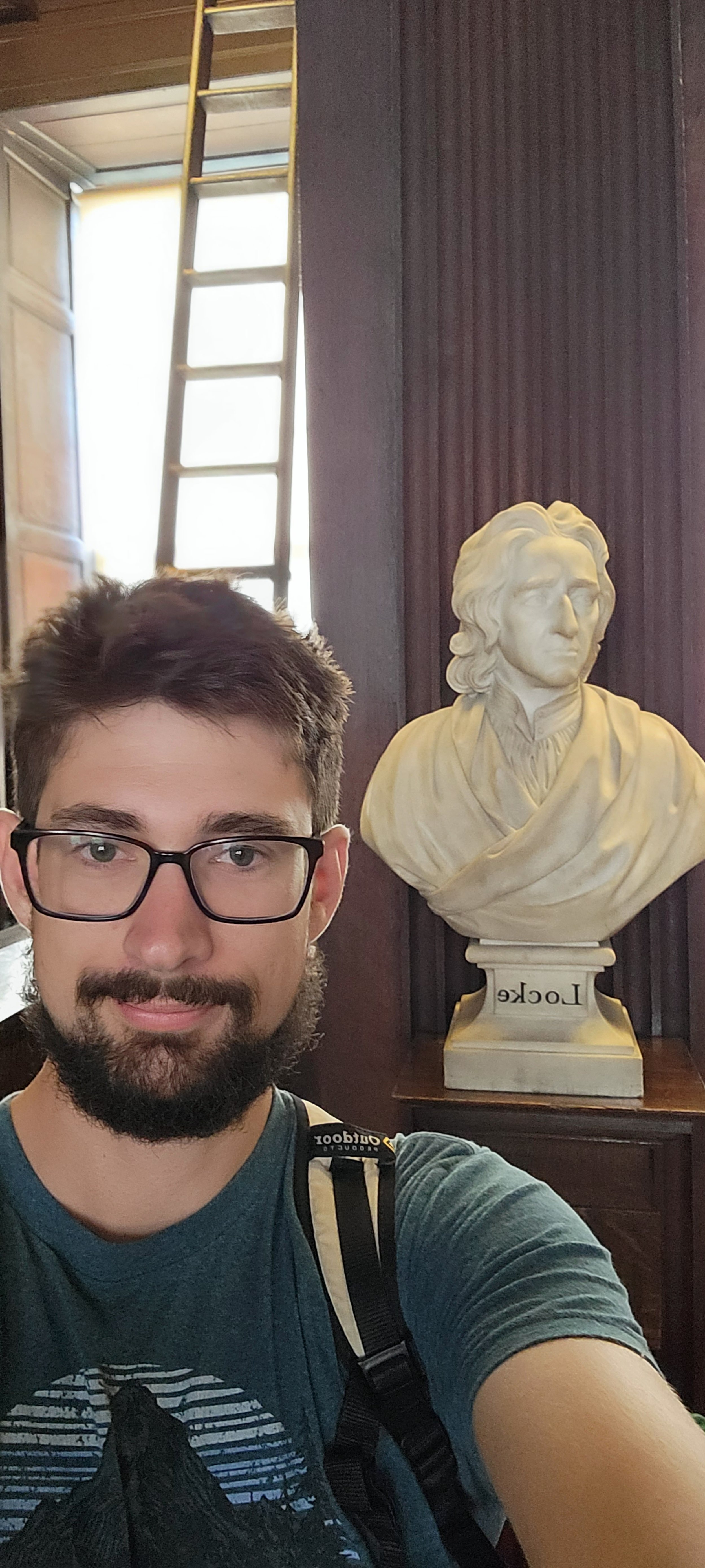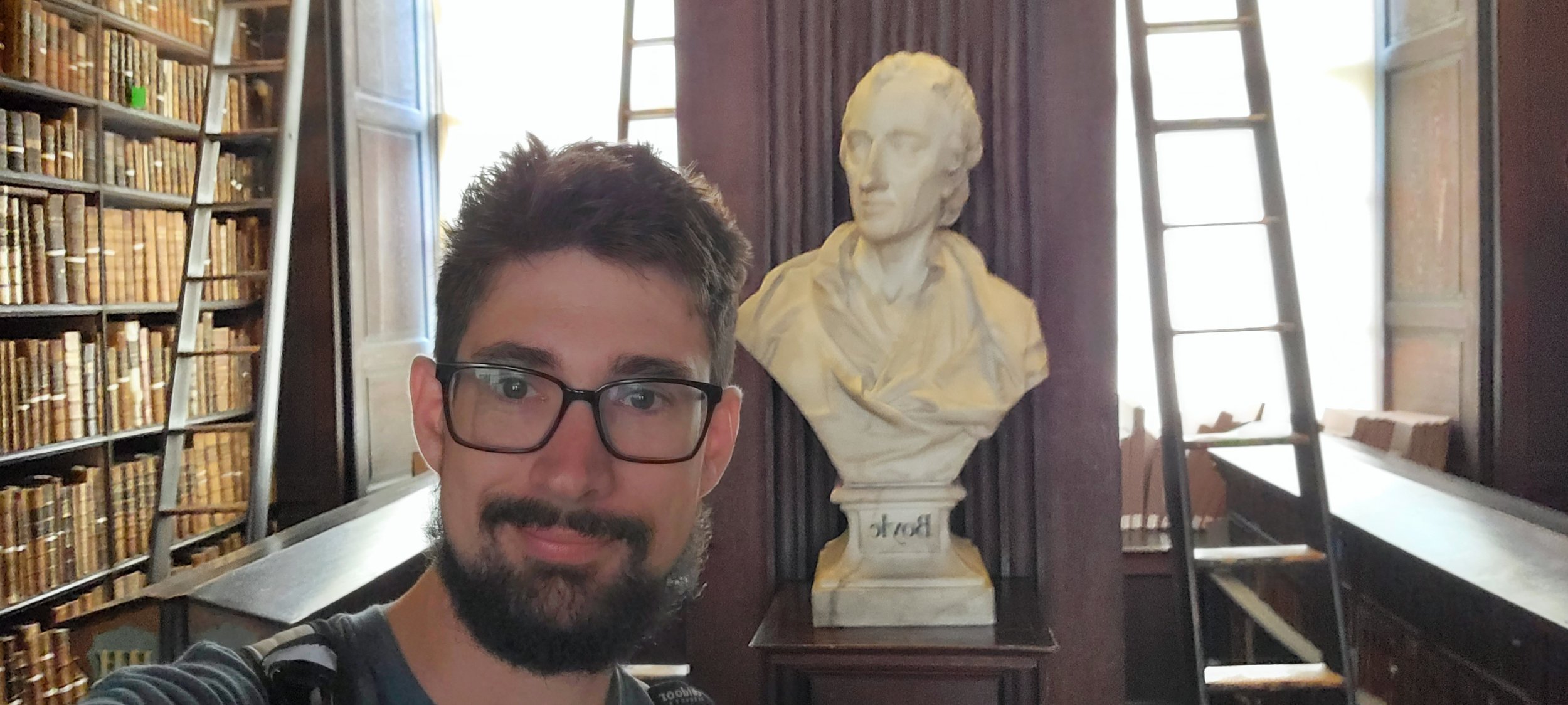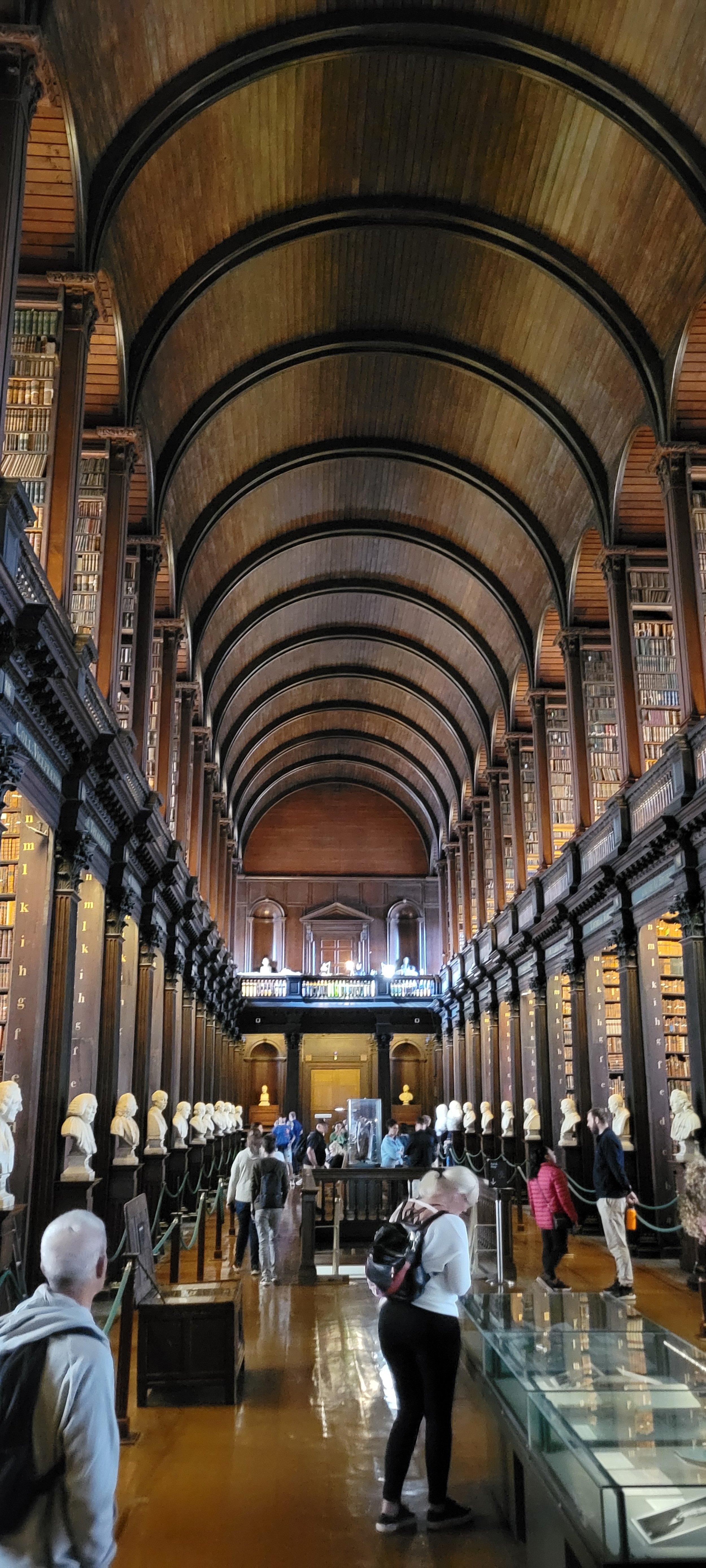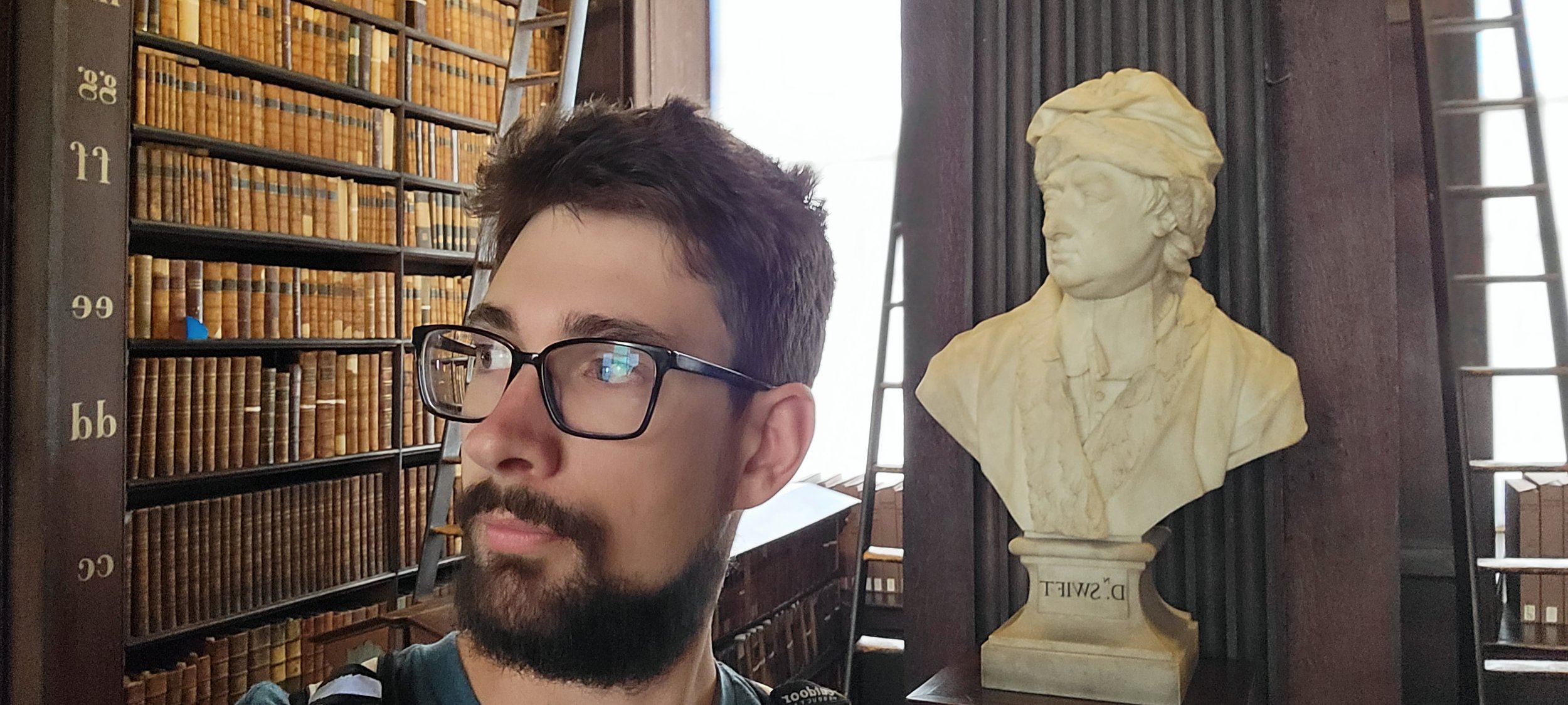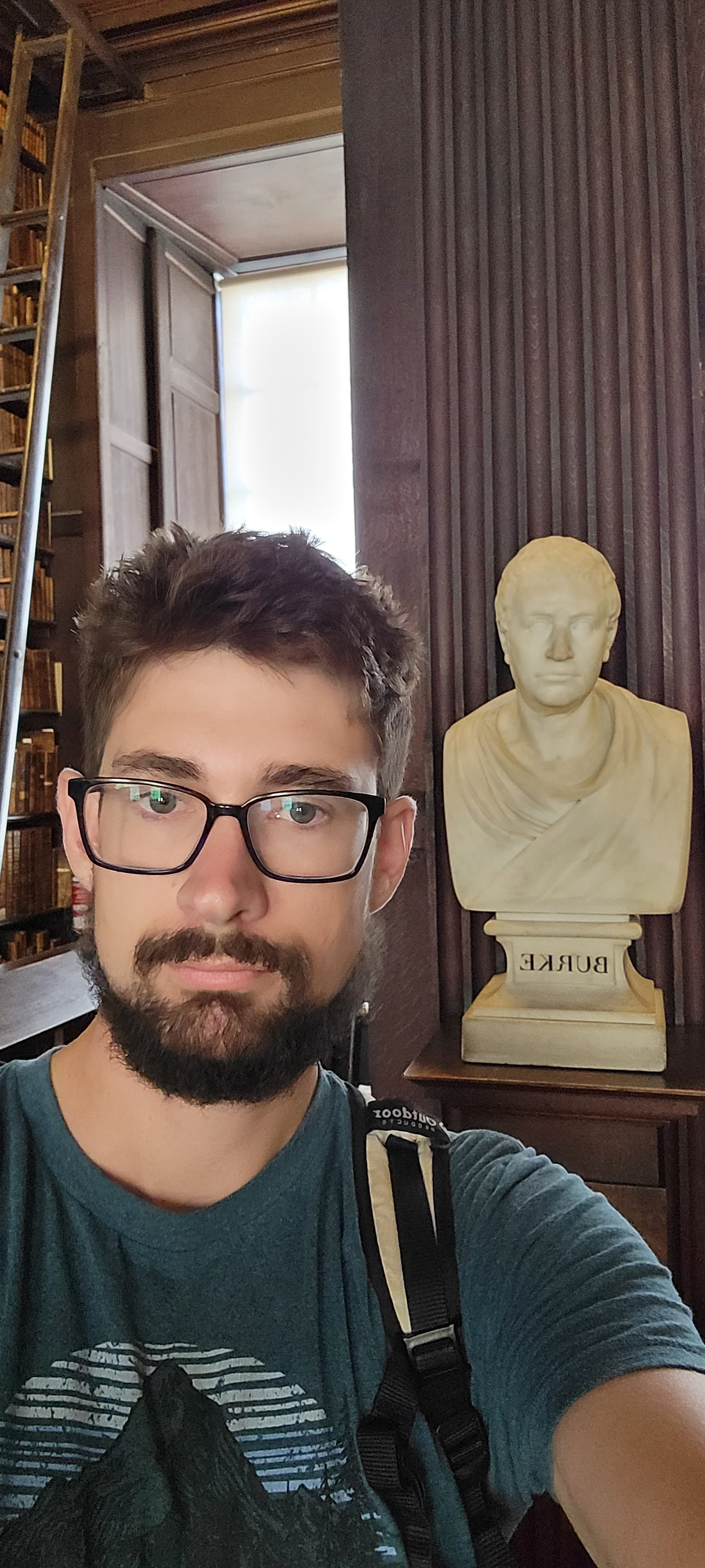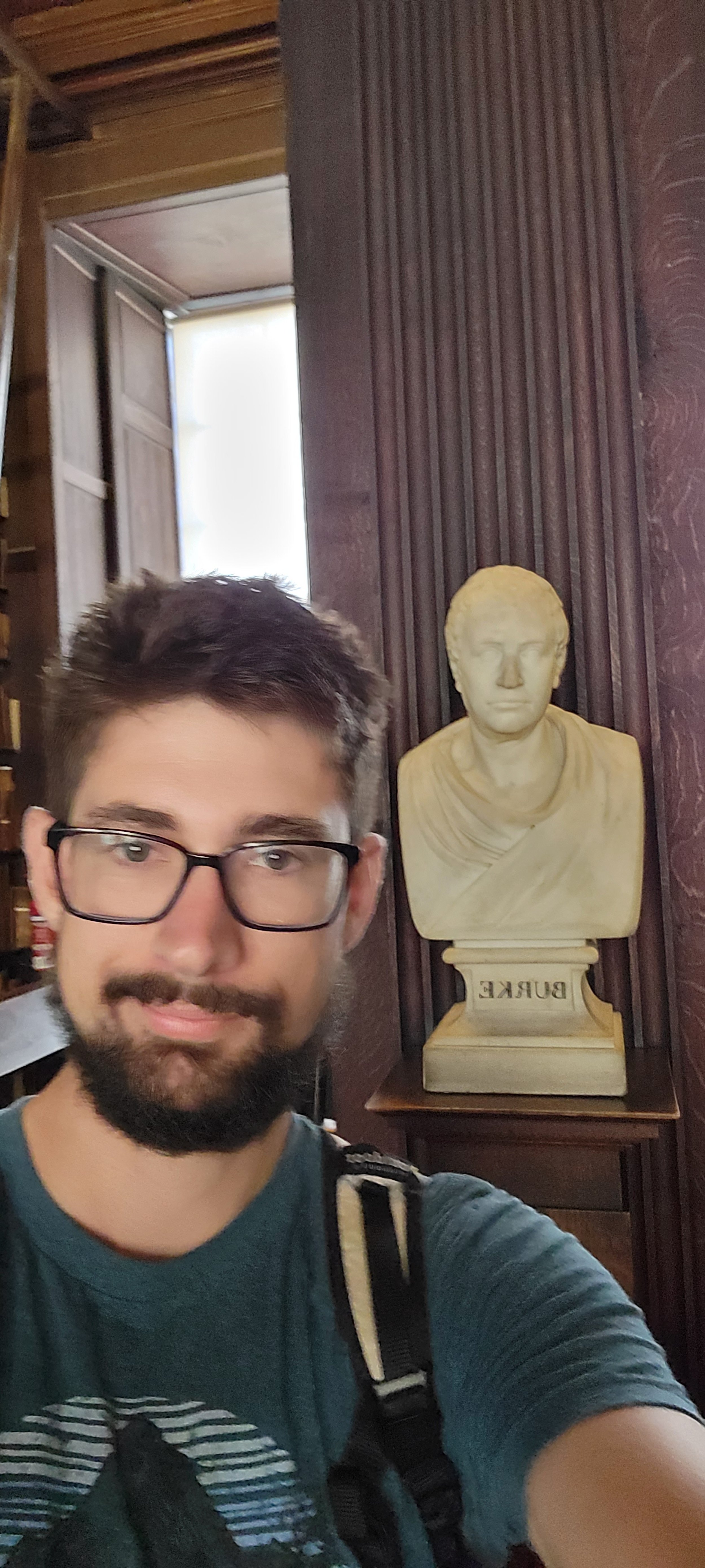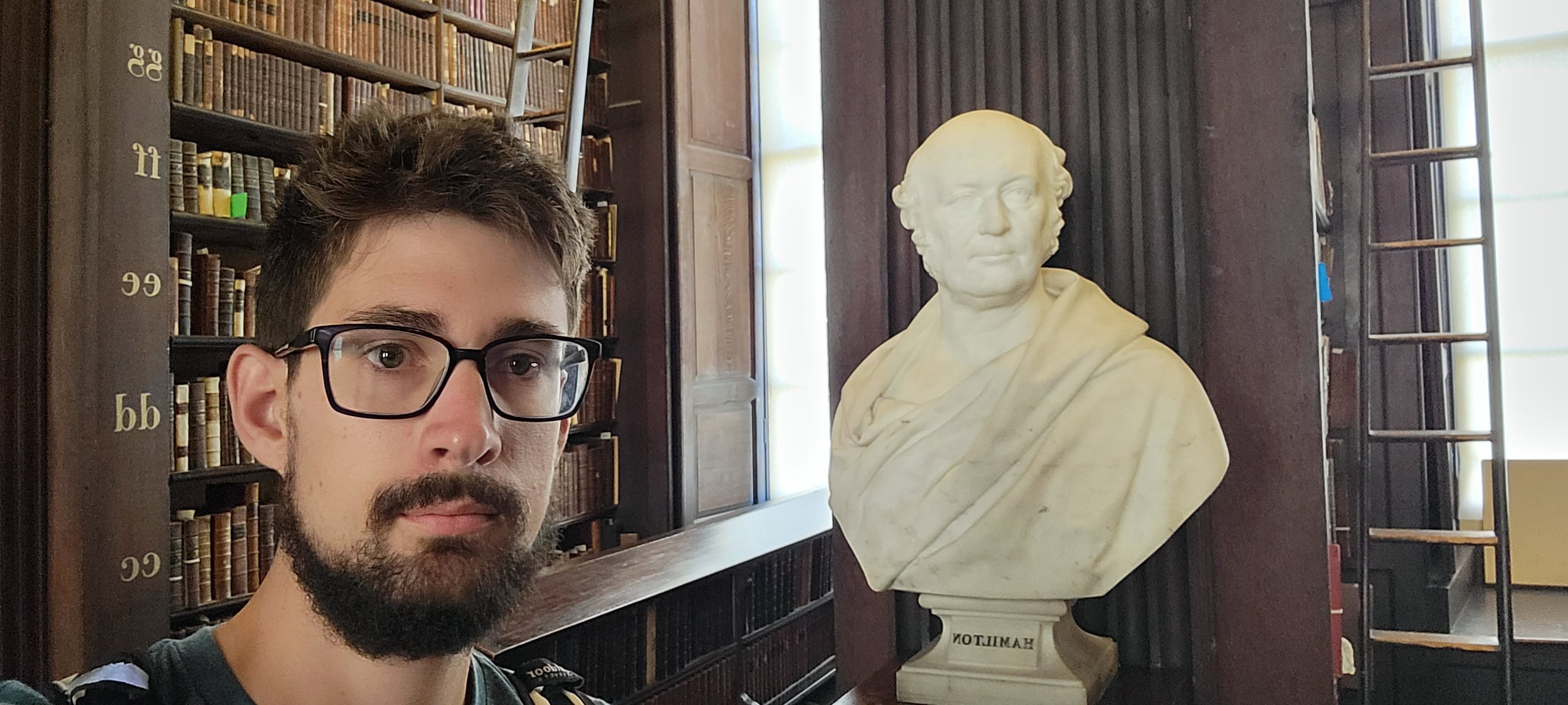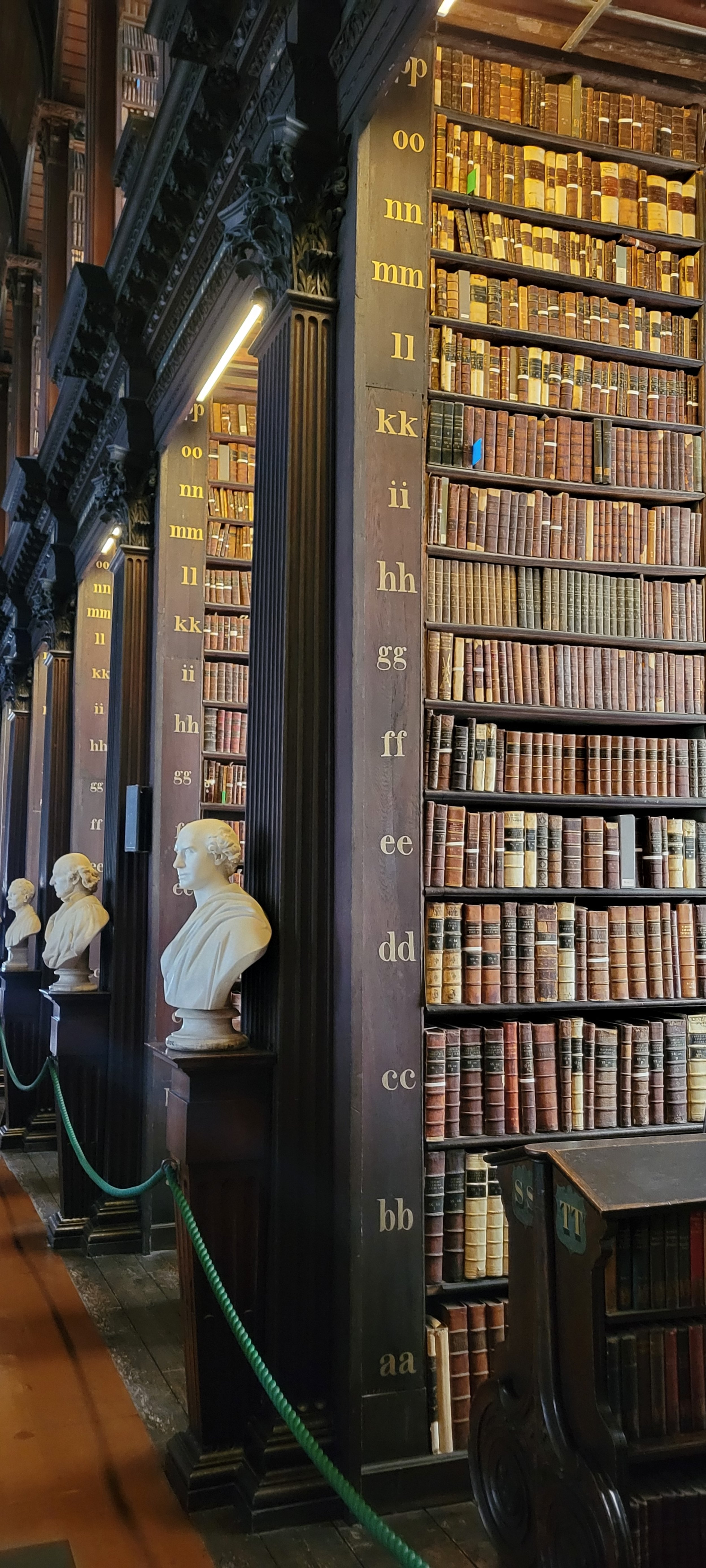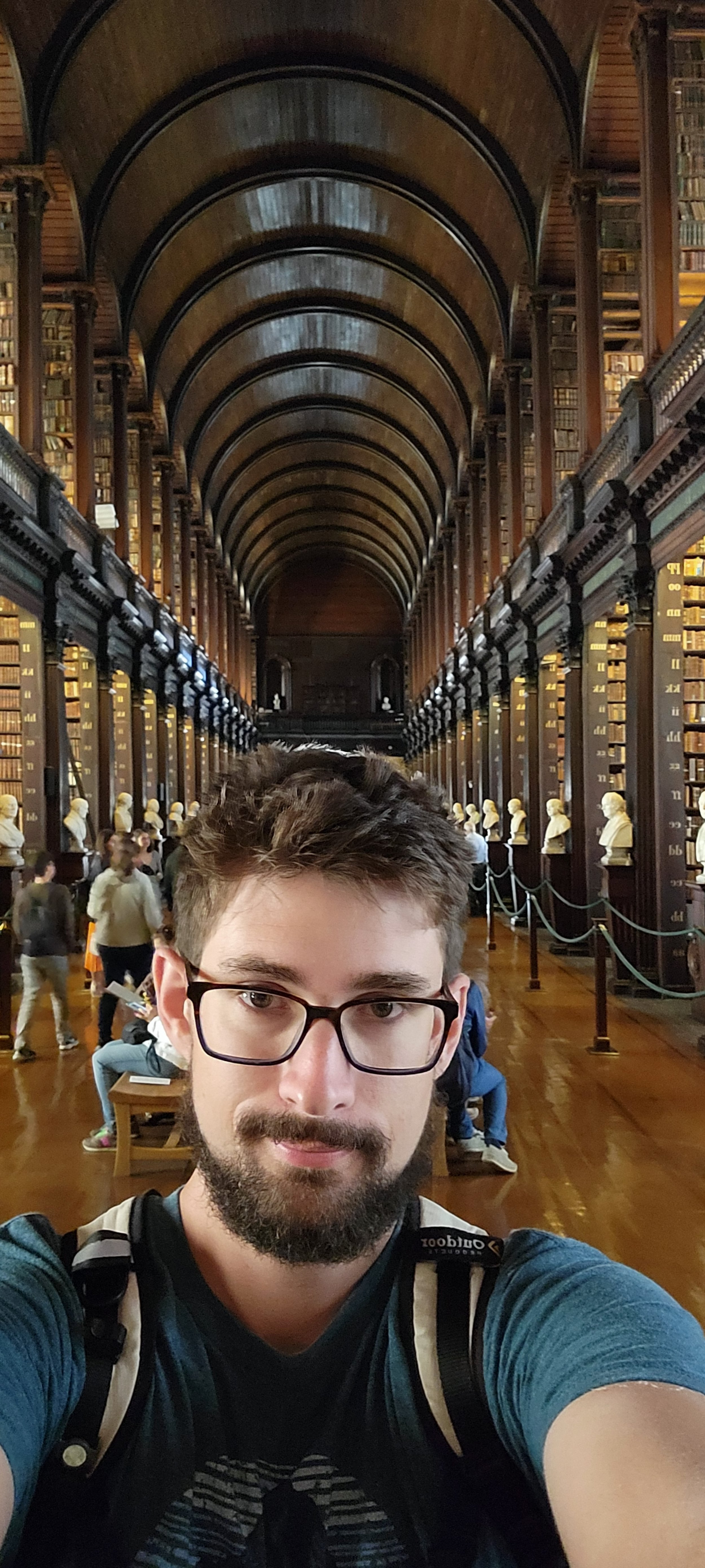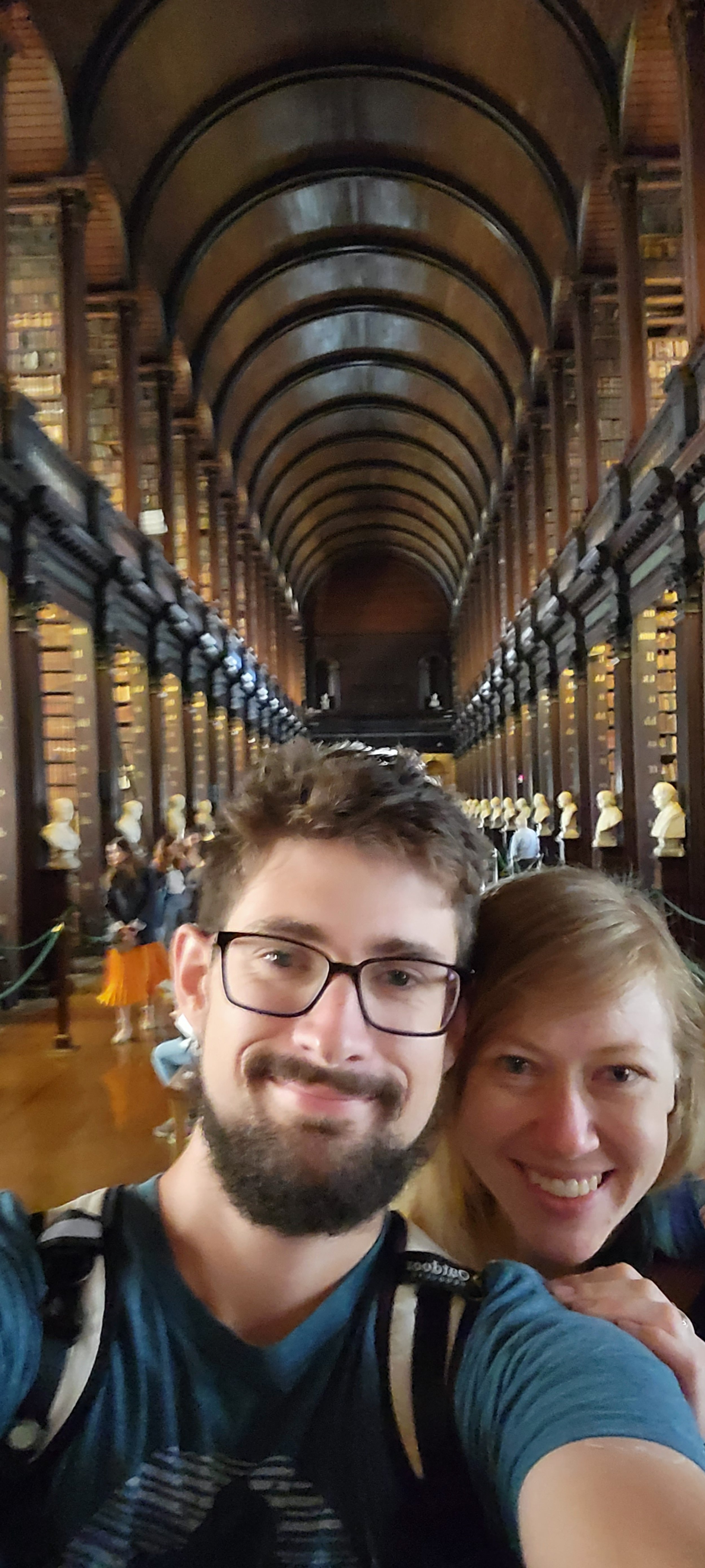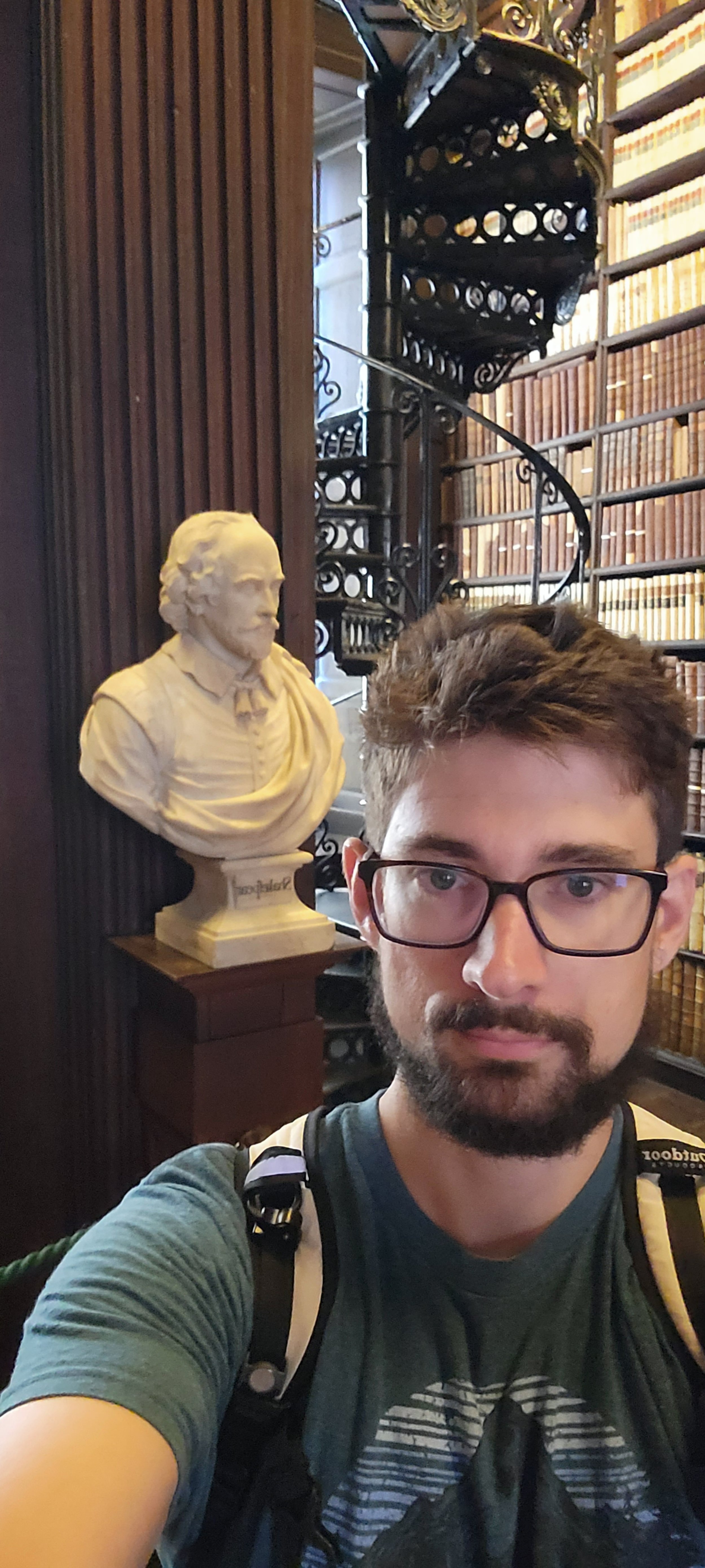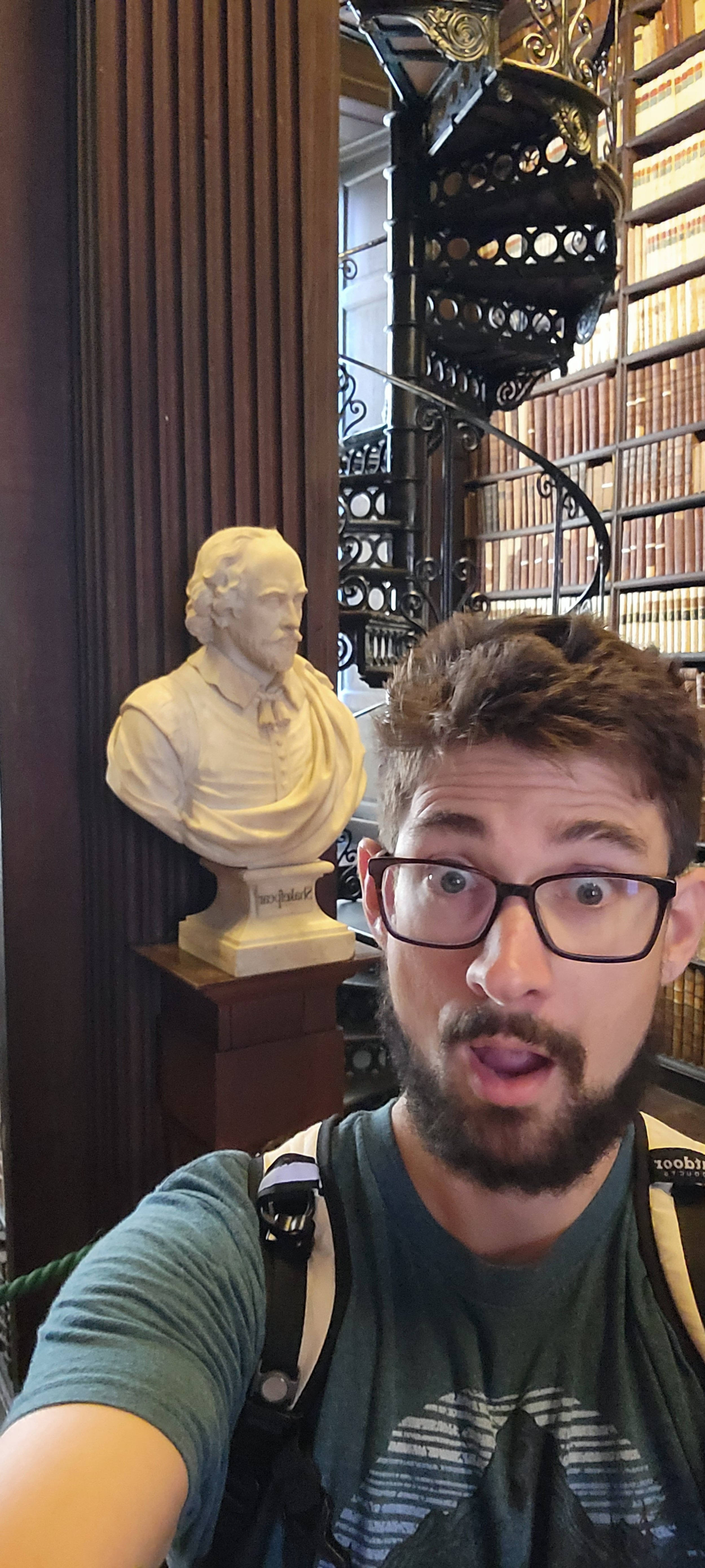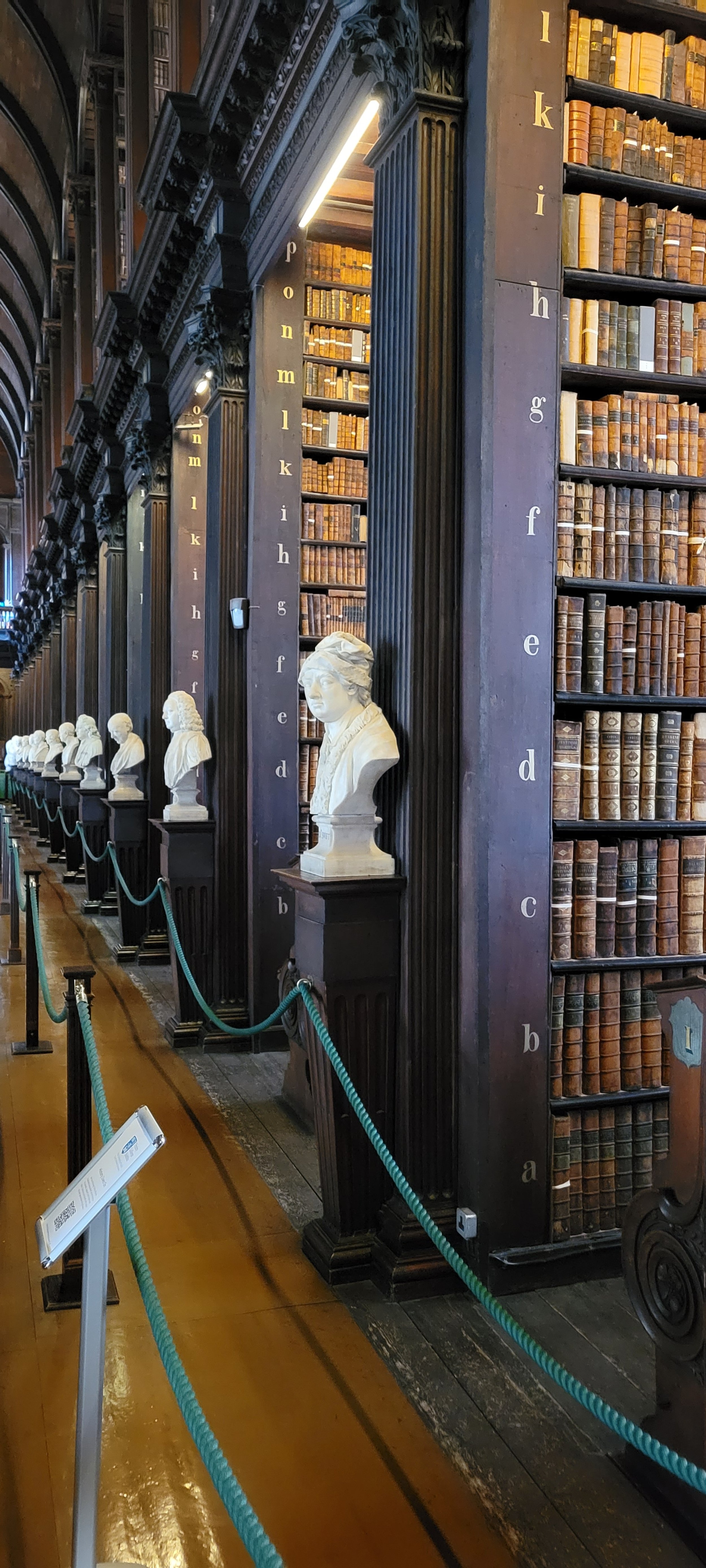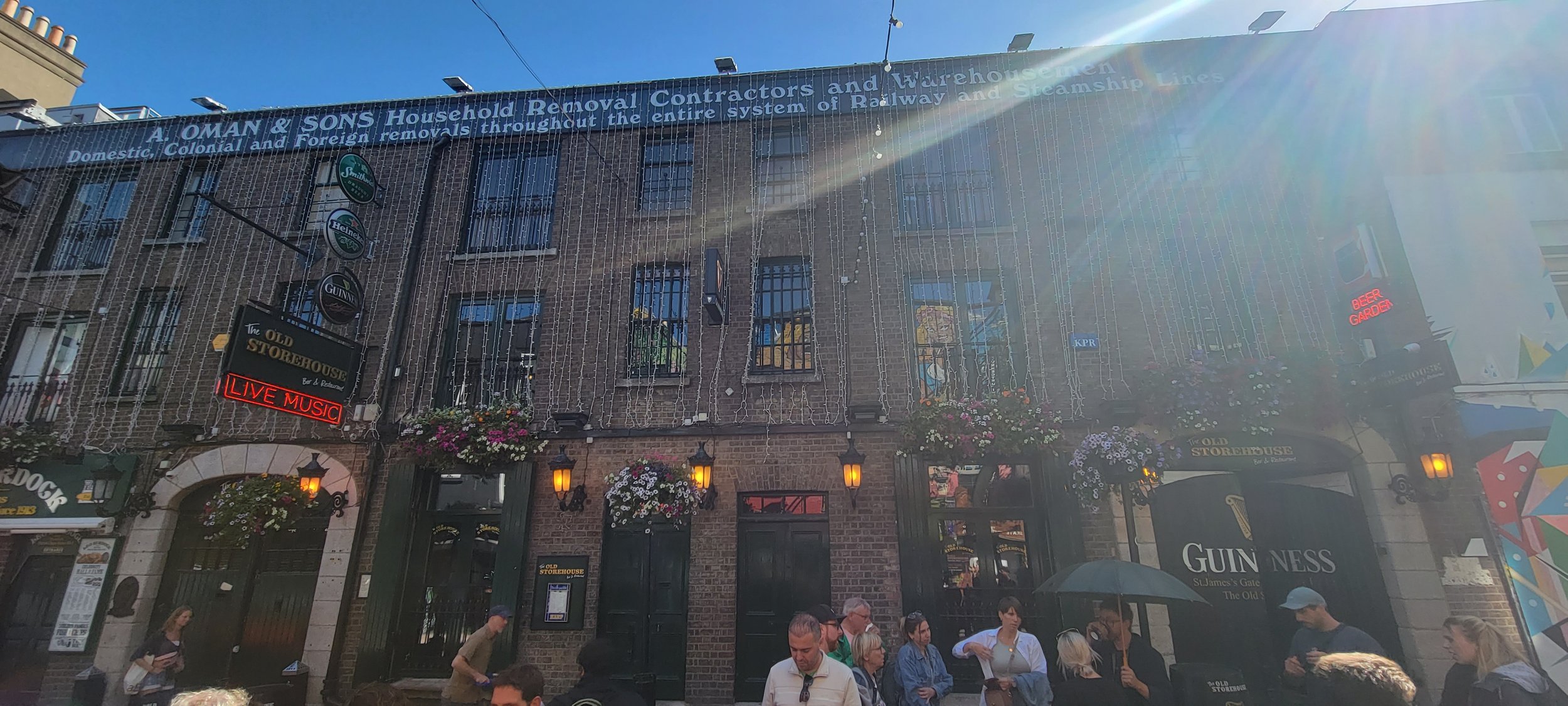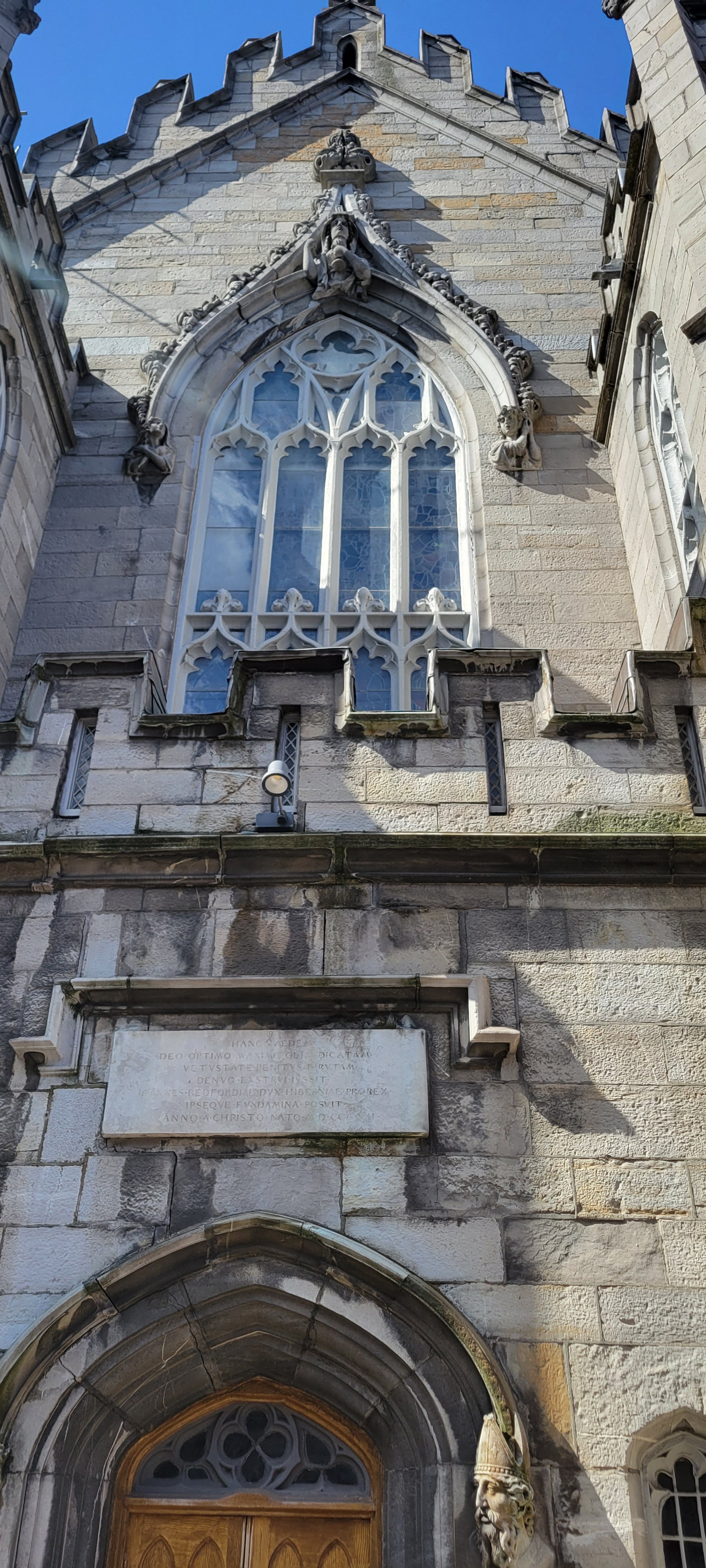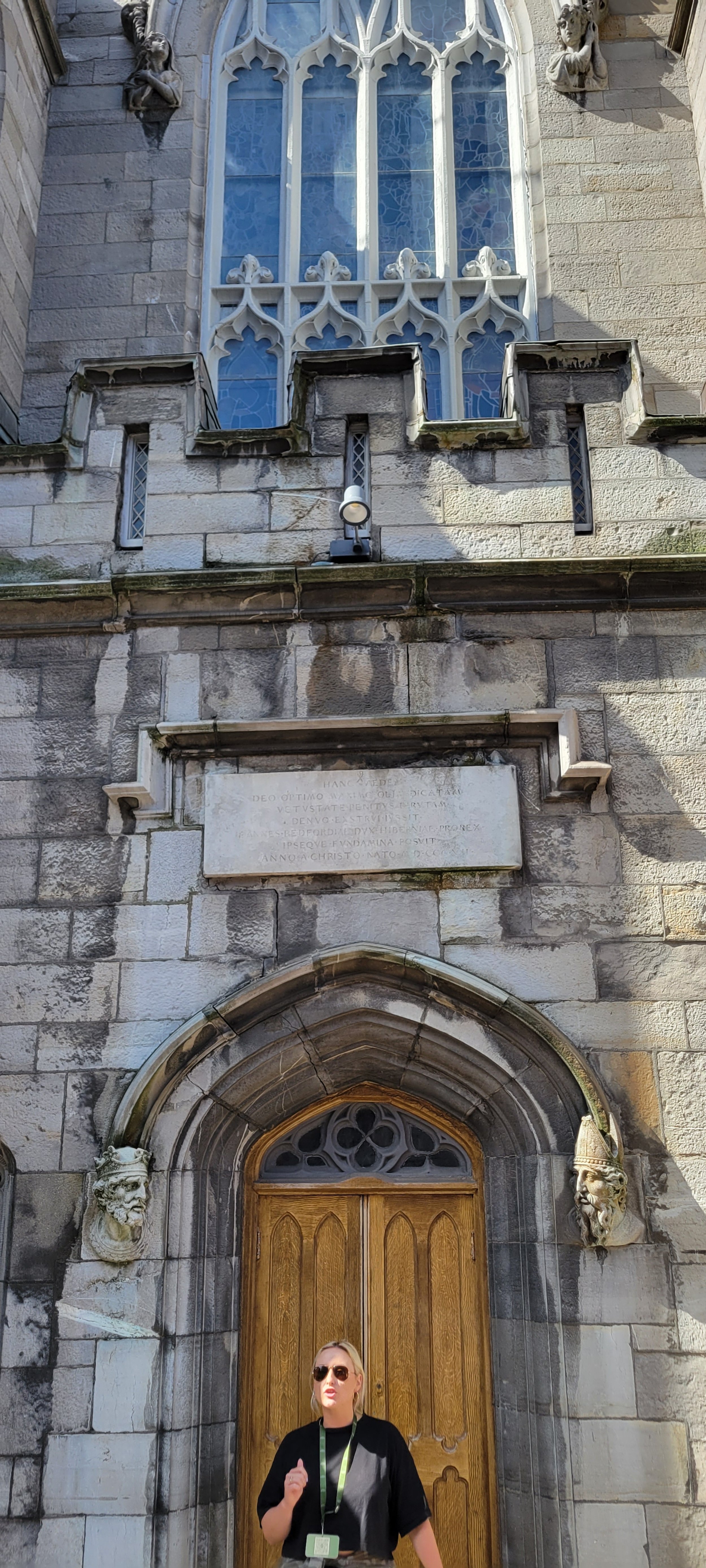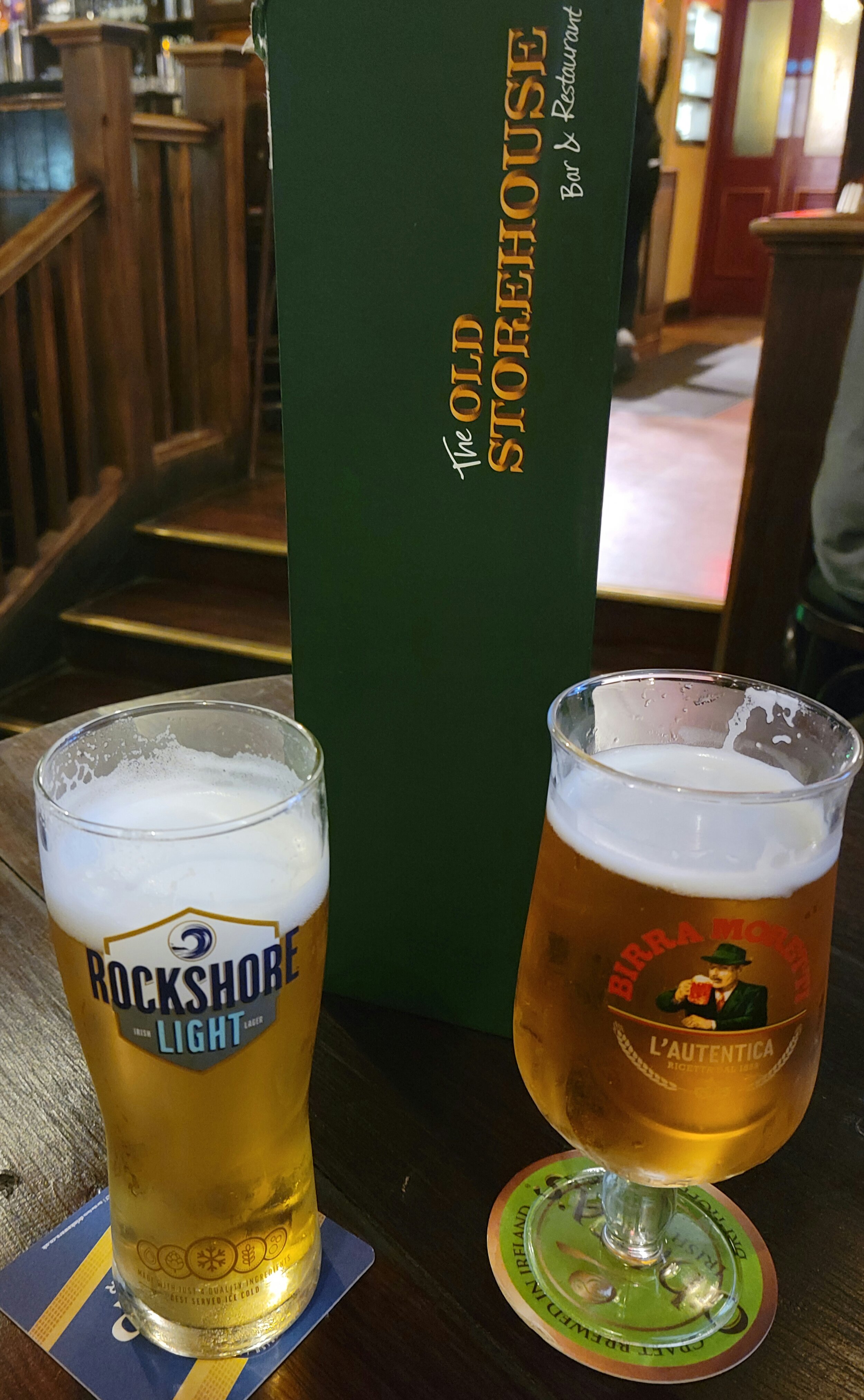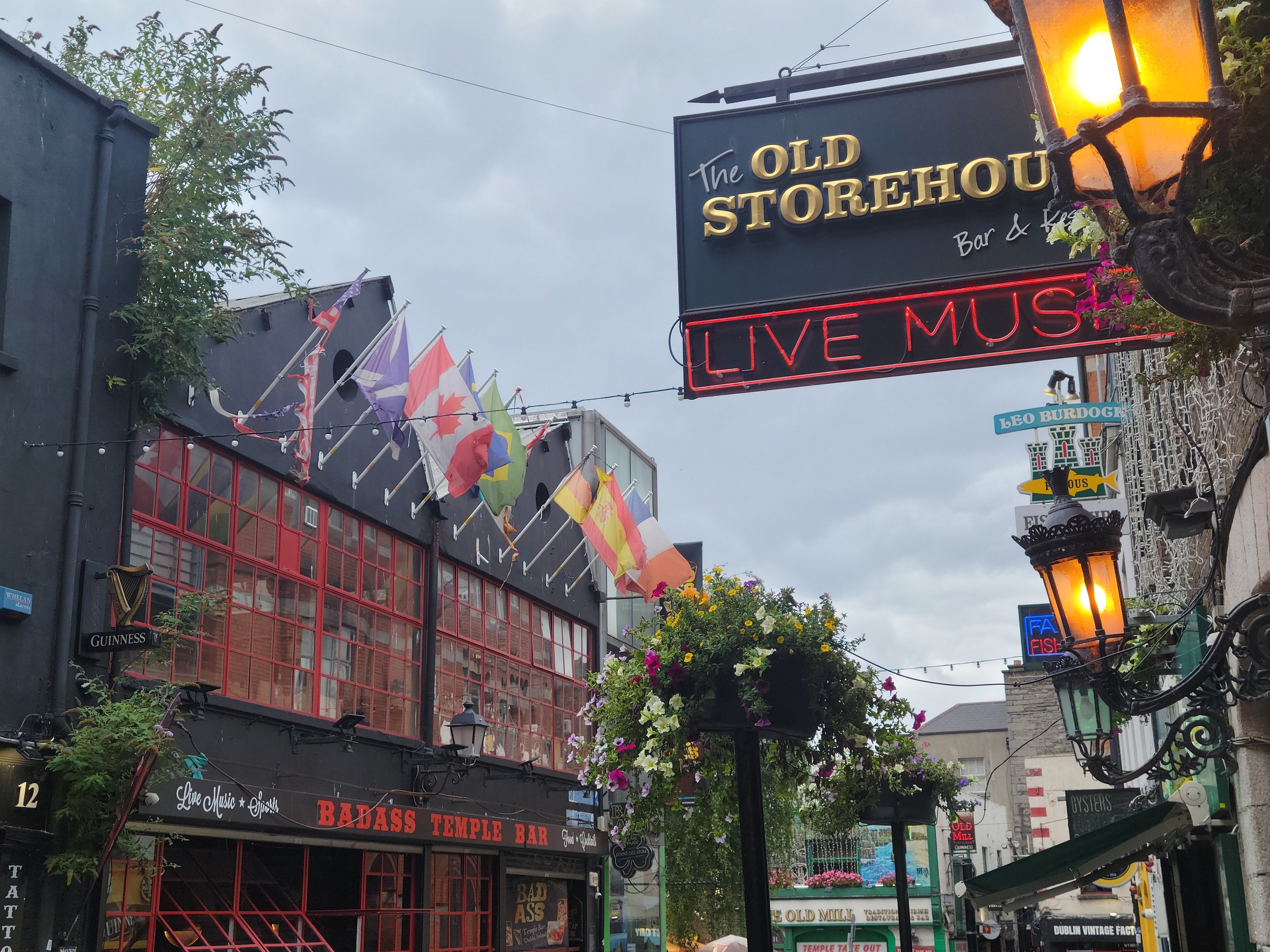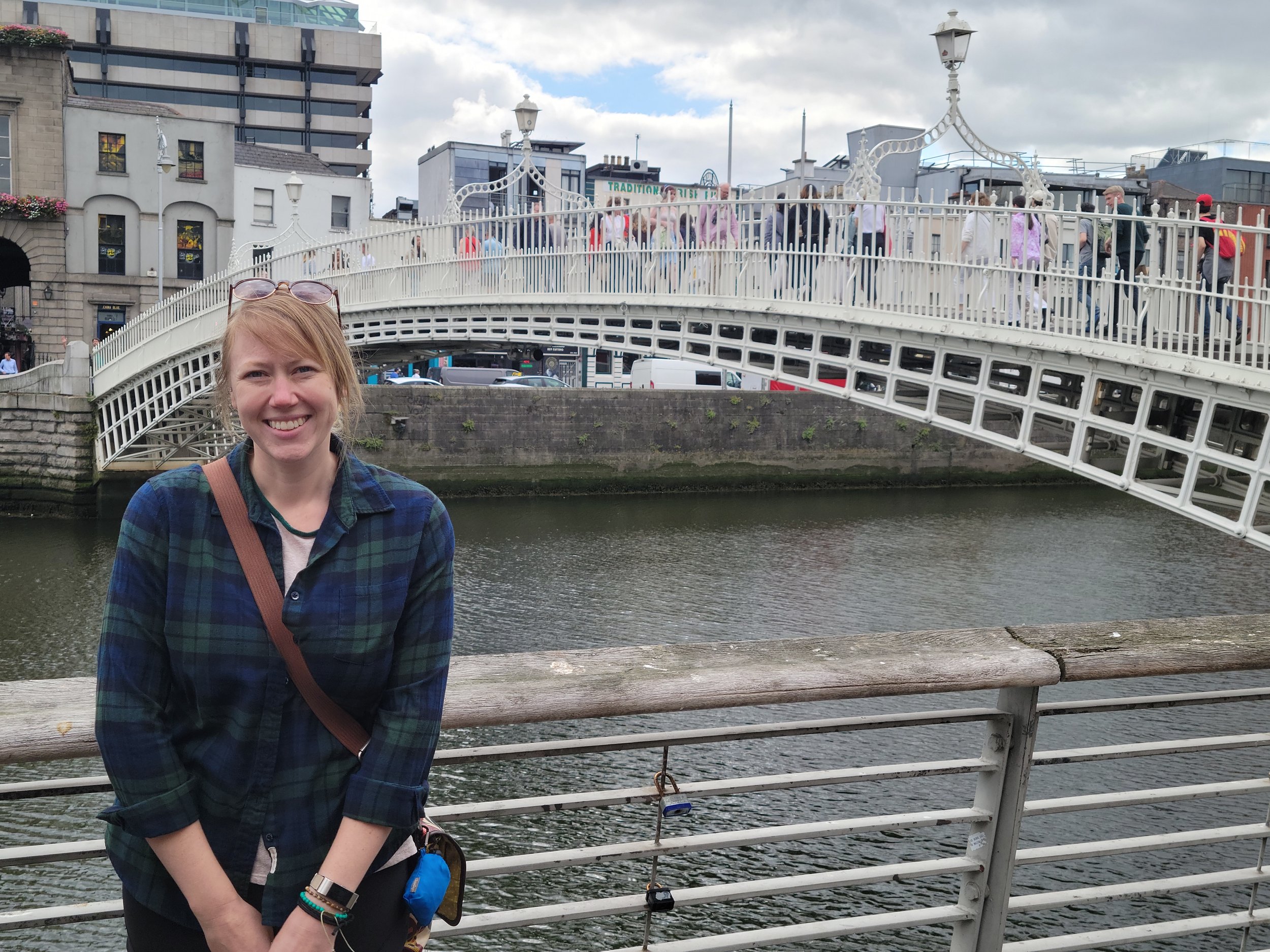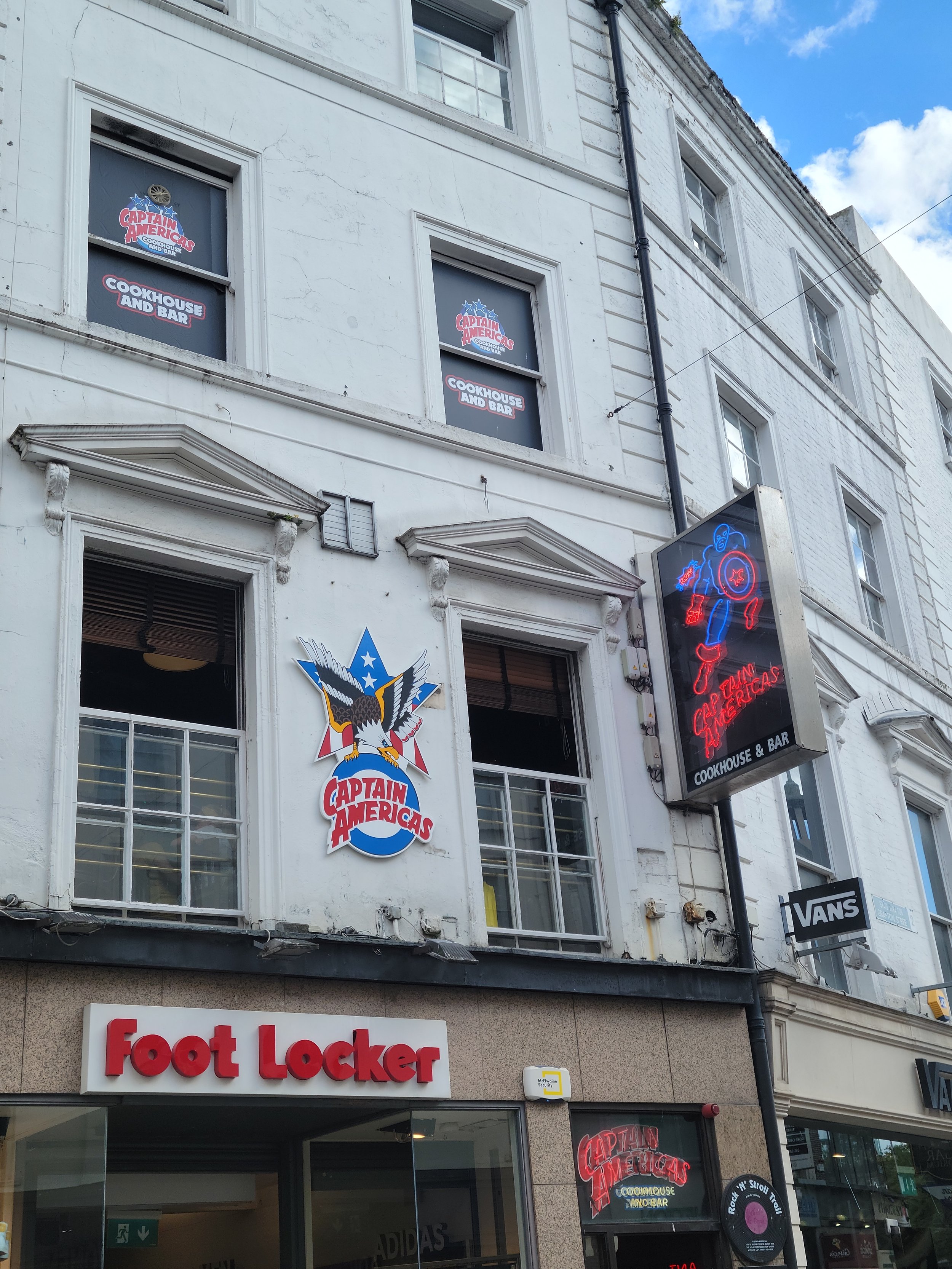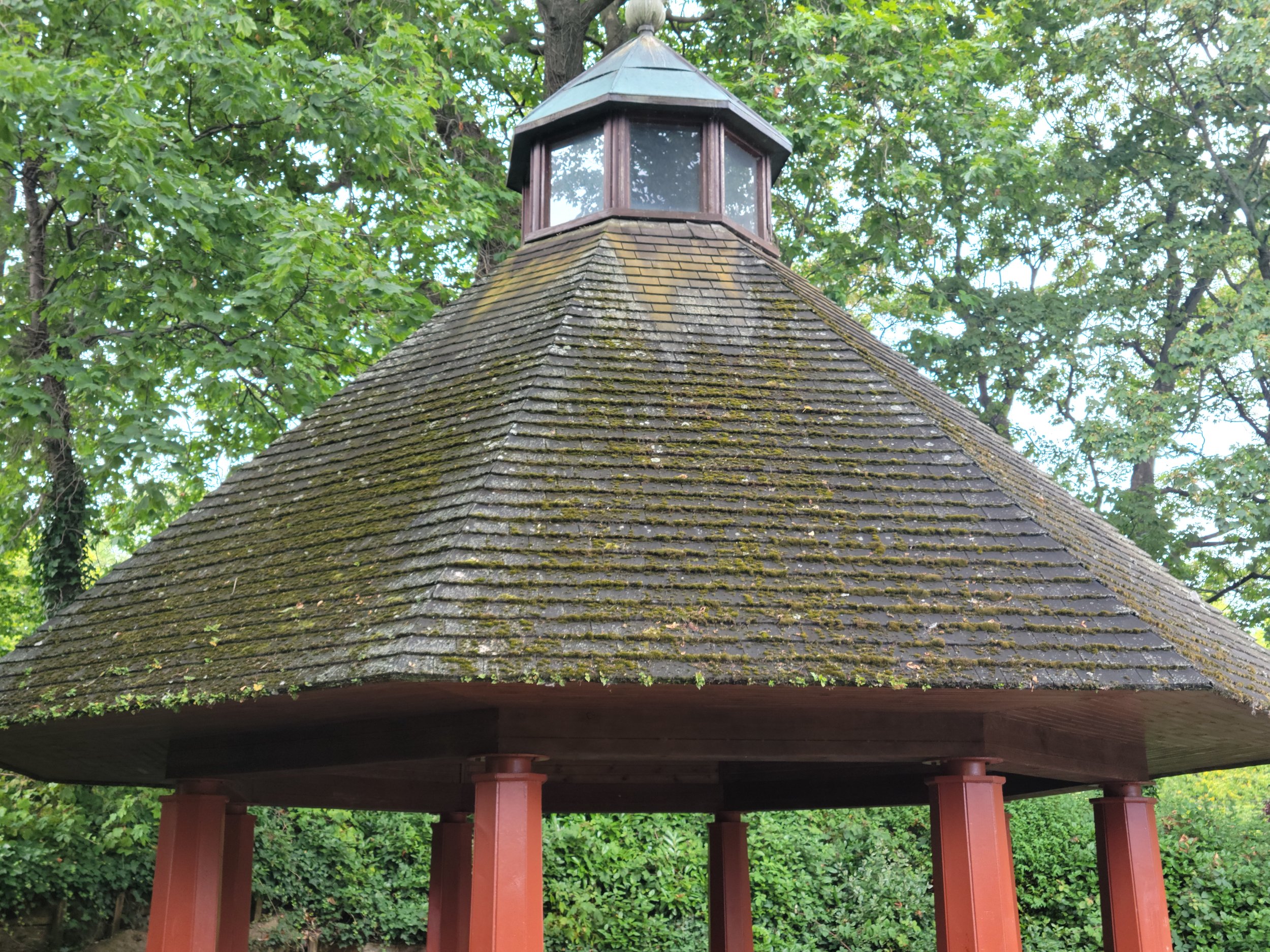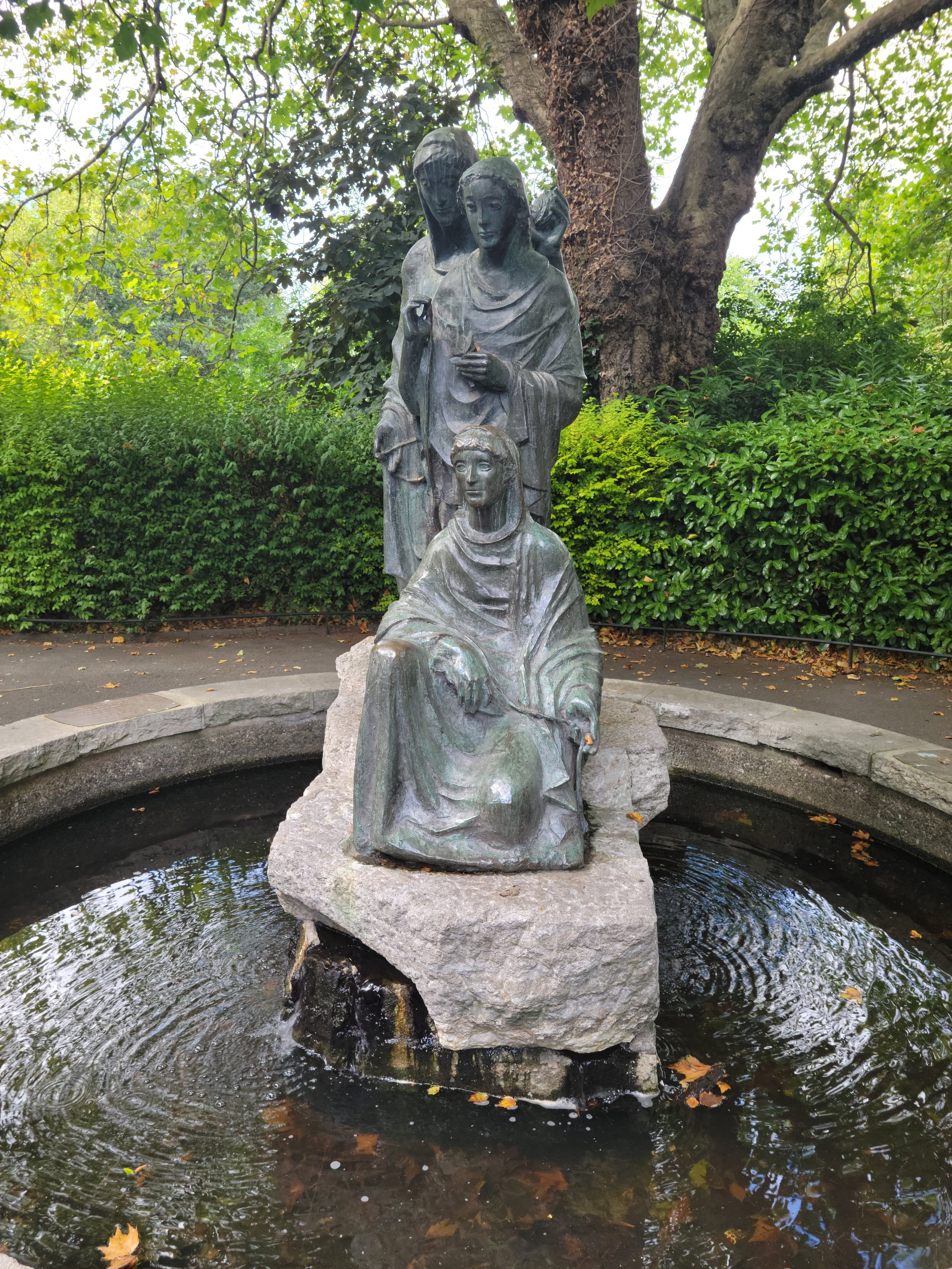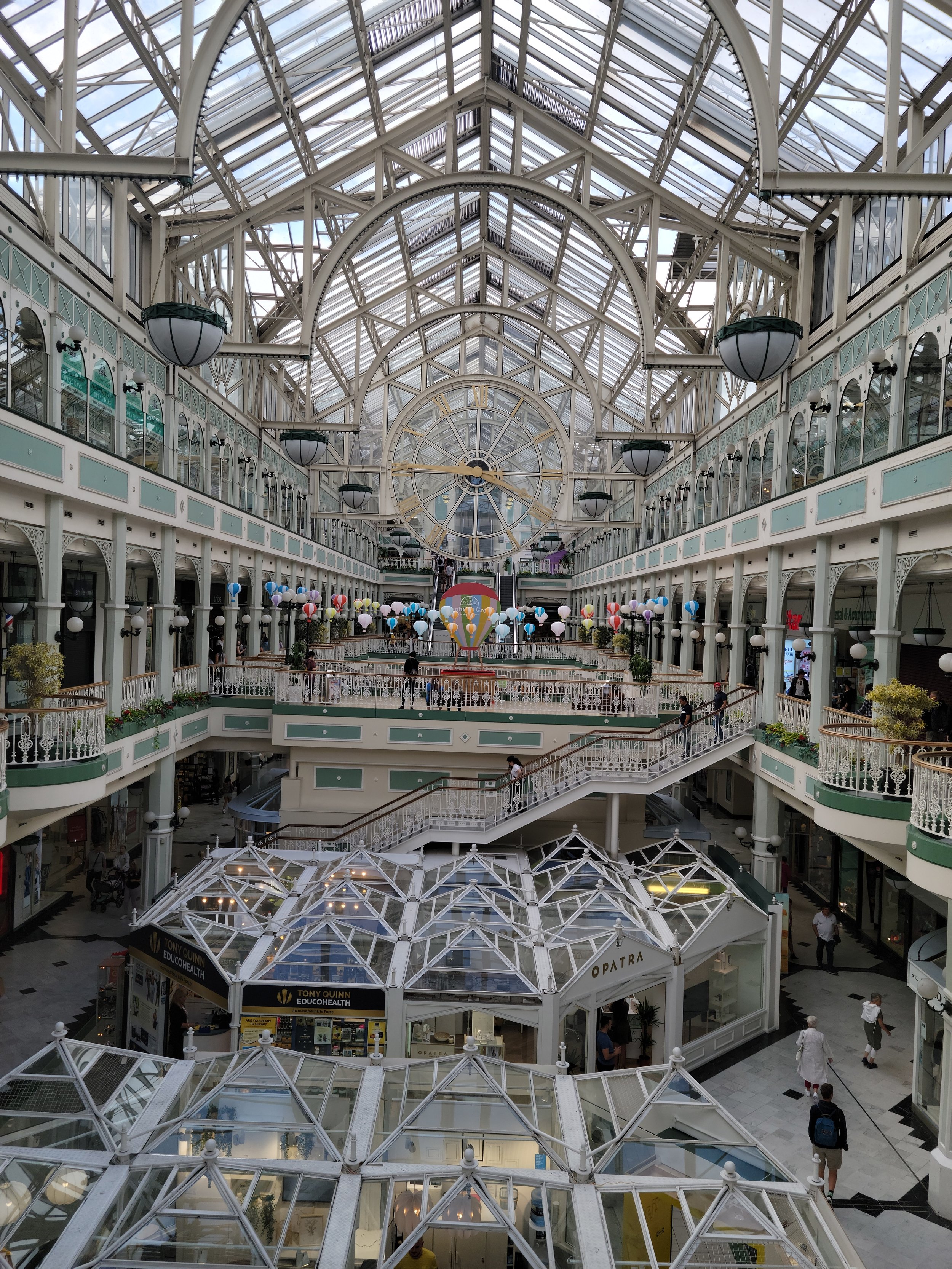Day 2 - Trinity College, Book of Kells, Long Room, and a Walking Tour
Kara and I wake up early the following morning to enjoy the free hostel breakfast. The hostel itself is split across two four-story buildings, and we must trek through the basement and back up into the first level to reach the cafeteria. The selection of cereals, deli meats, fruit, grocery store sausage rolls, and toast are perfect to start the day. We wash it down with tea and quickly clear our table to make space for the other guests.
Today we get tickets to visit Trinity College. Trinity College is the oldest university in Ireland and houses the Book of Kells, an ornately decorated manuscript depicting the four gospels of the New Testament that was created by several anonymous authors around the year of 800 CE. The entryway contains an in-depth history of the creation of the Book of Kells, the symbolic imagery behind many of the pages, and how scholars were able to determine the date and origin of the book. Once I’ve read all of the panels throughout the entryway, Kara and I head to where you can see the Book of Kells. The room to see the book is dark, with a glass case illuminated in the middle of the room. The light shines from above onto the gold-leafed pages of the tome, and I am immediately sad that I am unable to flip through the ancient pages. We are ushered along by the sole security guard, and enter my favorite part of the college, the Long Room.
The Long Room is an amazing piece of architecture that houses a library of over 200,000 of the Library's oldest books, many of which are hundreds of years old. On either side as you walk into the Long Room, bookshelves rise unbelievably high, meet a second story, and continue rising until the shelves meet the bottom of a stunning barrel-vaulted ceiling. The shelves, floor, ceiling, and benches are carved from some dark wood, perhaps walnut. At the end of each shelf is the bust of a great thinker or writer. On the right, Homer, Socrates, Plato, Aristotle, Cicero and famous Greeks and Romans lead one to Jonathan Swift and other modern authors. On the left, busts of William Shakespeare, Isaac Newton, Edmund Burke, and other modern scientists and writers greet the visitor. With so many philosophers or writers I admire, I have no choice but to fill my phone with selfies.
I linger among the shelves for a while in this room. The books, the busts, and quiet, and the aesthetic of the library is very comforting. Eventually we move on and end up at the Trinity College gift shop, where I purchase a ballcap emblazoned with the Trinity College logo and a few postcards to send to friends back home.
When we get our fill of Trinity College we head out to The Old Storehouse, a pub where we plan to meet our tour guide for a free walking tour. The guide takes our group through an immersive history of the city, first guiding us to Dublin Castle, where she gives an overview of the origins of the city dating all the way back to the Vikings. The castle is a weird mix of medieval architecture with 19th-century Georgian architecture attached. There are plenty of eclectic vibes of the place, but I like the lack of uniformity from the outside; it gives it the character of a living building, rather than an austere or revered location.
We move around the corner to Chester Beatty Library, where our guide runs through a history we did not capture in our initial visit. She tells Dublin’s history with black tar heroin drug gangs in Dublin, as well as the heroic story of Veronica Guerin, a journalist who was killed because she refused to remain silent about the corruption and impact of the drug trade on Irish citizens. I still haven’t had a chance to look into her story further, but I plan to learn more about her, given the impact she had as a reporter and the outrage her death had on Irish citizens.
From Dublin Castle we move to the outer wall, where our guide discusses the history of the street names. Each of the street names have a Gaelic (or Irish) name and an English name. However, whoever translated the Gaelic to English did a poor job, and many of the street names ended up with comically different names depending on whether you are using the Gaelic or English versions.
We also learned about the story of Dorcas "Darkey" Kelly, the owner of a brothel who was infamous for protecting the ladies in her charge better than any other brothel-keeper. If a client got out of line, she was known for pummeling them quite hard before throwing them out of her place. Her clientele included some very powerful people, including politicians and government leaders, so she was eventually accused of witchcraft and burned at the stake. After she was burned, it was discovered that she had several bodies buried in her basement, which none of the ladies-in-waiting knew about. This discovery led to the claim that Darkey Kelly was the first female serial killer in Ireland (a claim which is historically murky).
The next stop on our tour is Christchurch Cathedral, where we get some shade and hear the story of how a cat and mouse got stuck and mummified in the organ pipes of the cathedral. They animals are currently on display within the church, which is one of the weirder tourist attractions seen in Dublin.
From there, we walk through Temple Bar, where we stop for a discounted beer back at The Old Storehouse. After we enjoy a pint and some rest from the walking, we head over the Ha’penny Bridge, named because it used to cost a half-penny to cross the bridge. We walk up the Liffey River, a river known primarily for being quite filthy, and end our tour back at the front of Trinity College. We depart from the tour guide and head toward St. Stephen’s Green.
St. Stephen’s Green is a lovely Georgian-style park with paved walkways all around, looping around and cutting through the middle of the park in curved patterns. Between the paved paths there is plenty of space for kids to play and families to spread out and have picnics. There is tree cover throughout the park, cooling us as we walk. At the entrances and forks we find monuments dedicated to important historical events like the Irish Potato Famine.
As the late afternoon begins to wane and we approach evening, the city pavement loses some of its heat. Exhausted from a long day of walking, we head back toward the hostel, stopping at a lovely Hong Kong-style dim sum restaurant. I get a lovely rice dish with veggies, pork, beef, and chicken, while Kara eats a spicy sesame cucumber salad with chicken dumplings.
We stop at a convenience shop to get more bottled water and snacks for later, head back to the hostel, shower and hang out for the rest of the evening.
